Derby's Silk Mill is the site of the world's first factory and has undergone a ten-year multi-million pound programme to create a inspirational and active Museum of Making - locally designed and delivered; globally significant. The Museum of Making has been co-produced with our communities, inspiring future generations of makers, creators and innovators.
Don't wanna be here? Send us removal request.
Text
We Backyard Foundry

August, Tuesday, 23rd, 2022 the Museum of Making workshop team travelled to Artisan Foundry, Liverpool for a one-day course in greensand foundry practice, patternmaking and casting.
The course was taken by Art, an experienced foundry trainer and practitioner. The comprehensive course taught everything from sand moisture content and pre-moulding preparation, setting new and old patterns for moulding, ramming sand techniques, correct mould venting, sprue cutting, chemical additions to metal, heating and pouring hot aluminium and other metals such as bronze and gun metal.
Undertaking the course was preparation for commissioning the Museum of Making workshop crucible -- the final piece of equipment to be brought to life in the newly-opened museum workshop space. Post course, with the critical H&S and casting PPE regimes poured into our minds (aluminium melts at extremely high temperature) - the workshop is preparing to design courses and demonstrations in patternmaking, greensand moulding and metal casting.
Below is a selection of images in a quasi non-linear order featuring Steve, Arthur, Andy, and, of course, the mighty Art.

The green foundry student checking the ‘greensand’ which isn’t green but red. Green denotes it is damp and sticky with natural moisture and clay. Art left, Andy right.
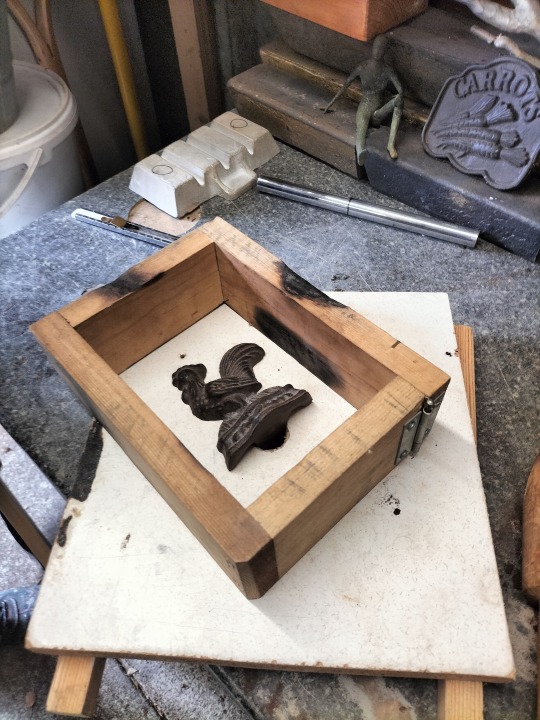
A chicken doorstop casting repurposed as a ready-made pattern, moulded to make another slightly smaller chicken doorstop in aluminium - (all cast metal shrinks after casting, aluminium about 1mm for every 70mm 1/70 -- patternmakers use special calibrated ‘expanded’ contraction rules). Using the casting from an original pattern as the next pattern and then that cooled casting as the next pattern the chicken casting would, of course, eventually stop being there. Don’t copy copies then.
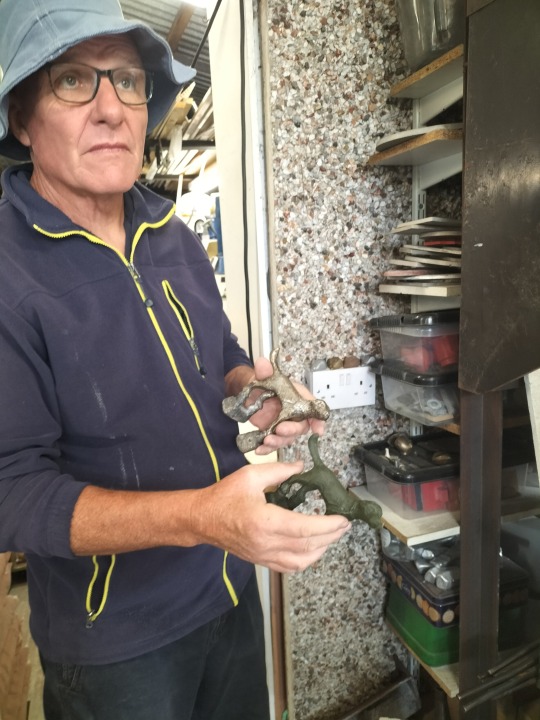
Art also runs a day course in lost wax casting. Lost wax casting as everyone knows is the oldest industrial casting process known to man. As a workshop, we will at some point be lost wax casting.

The Museum of Making is the keeper of hundreds of cast metal plaques, mostly railway related, which carry information in the form of cast text. With a crucible in workshop and the greensand training in place we intend to run courses wherein makers can create their own word signs using handmade or off-the-shelf white-metal or plastic letters, 3D text simply applied to a flat backboard.
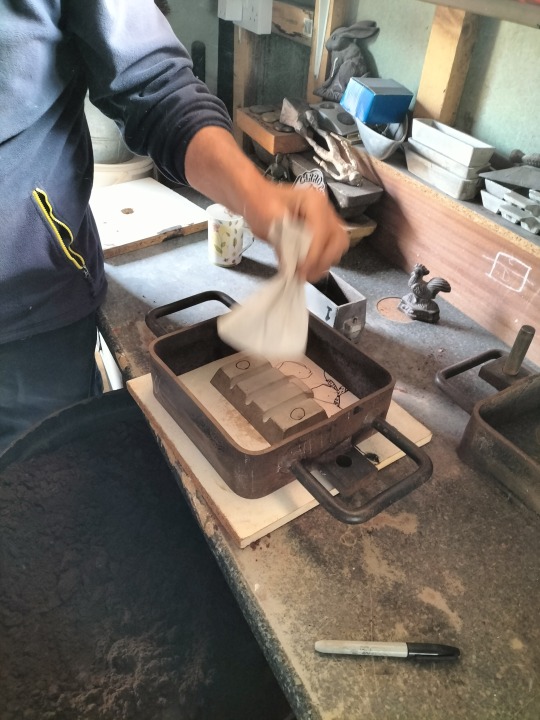
Art is here applying a parting powder to a metal ingot pattern. A bit like talcum powder, it is kept in a traditional permeable muslin ‘pounce bag’ and the trick is to dust the pattern as if with icing sugar evenly. Parting powder stops the wet greensand sticking to the pattern and the mould sand tearing when the pattern is withdrawn after ramming. the sharpie circles denote where we are to cut riser and runner system.

We decided to cast a sign for Museum of Making workshop. The aluminium plaque pattern in the picture is ready-made and different sized letters and fonts and logos can be placed on the pattern to make varying bespoke castings. Bit Jamie Reid meets Fawlty Towers going on at this stage. The letters and logo are attached using Copydex latex glue which holds objects in place for moulding but can be pinged off - and glue residue piggled off - to clean up base pattern and let letters be used again.

Parting Powder mist

Art closing the two parts of a mould - known as ‘cope’ and ‘drag’. Cope is the upper box and has locating pins, drag the lower with accepting negative dowel holes or ‘eyes’. A mnemonic to use the moulding boxes in correct sequence is “eyes down”. You can see the down sprue and riser cut into the cope like two eyes in a strange Bruno Munari abstract face design. (Design as Art, Bruno Mari, 1966)

From this image you can see that the the ingot pattern is placed in the drag first, which is common. The pattern has no core box and is known as a shell pattern. The pattern makes its own cores which are extensions of the sand rammed up in the cope after the drag has been processed and turned over for the second-stage of sand moulding process. This ingot piece is also a good example of a ‘flat back pattern’, i.e., the pattern is placed flat on its back on a moulding board before sand is rammed (compacted) around it. * For a fuller description of different types of pattern equipment see Patternmaking Explained to Children - Steve Smith Museum of Making Tumblr).

Once a mould is completed and ‘closed up’ on its pins - and pattern of course withdrawn - the paired boxes are set on the floor ready for casting in the hot metal needed to make the required casting: iron, bronze, gunmetal or aluminium. The sprue and riser holes are then covered to prevent debris entering the mould before casting - usually a piece of wood is used. The ‘sprue’ is where the metal is poured in and the riser is usually diametrically opposite the pouring gate. The riser is there because the air within sealed mould must escape pushed out by the incoming stream of metal from the runner -- the riser also acts as a reservoir of metal and heat to feed the shrinking casting. When metal appears running up the riser to the top of the cope box the furnace pouring person realises the mould is full of hot metal and desists feeding the mould.

Art pointing out the particular sections of a ramming ‘dolly’. The tapered wedged section nearest to our instructor is designed to get into the tight corners a multiform pattern will present, the opposite flatter end - more mallet-like - is for when the pattern has been fully embedded in compacted sand and the rest of the void of the box is filled with backing greensand which provides the supporting structure of the fragile mould. Making these dollies in-house is easy and looks a good coproduction learning opportunity (how-to-turn-between-centres) for a Museum of Making volunteer. You Know who you are...
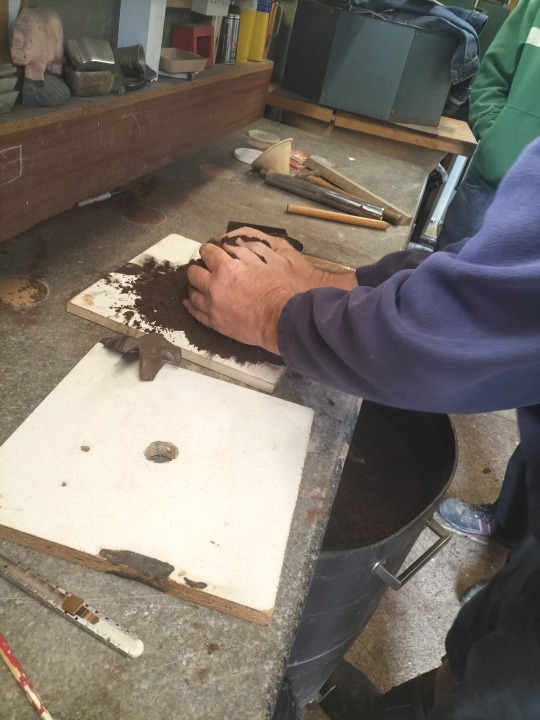
Greensand has to have just the right moisture and natural clay content to make it mouldable -- not too dense. thick sticky sand can prevent dangerous high-temperature chemical gases permeating through mould in the red-hot casting process. Here Art started to explain the properties the sand should have by demonstrating ‘by hand’ and in practice how right-damp sand should feel and behave under compression. At Ilkeston College, as apprentice patternmakers, we had to also complete City &Guilds Foundry Technology and Metallurgy examinations and empirical practice in college micro-foundry was essential. We used a closed flask - a bit like a cocktail shaker with a dial attached - to measure the moisture and chemical contents of greensand. If sand is too wet there can be gas-driven (steam powered) explosions - very dangerous - too dry and sand is friable, and casting will be a ‘scrapper-shitter’ filled with unwanted washed sand (inclusions) from decomposed mould.

Early stages of moulding: taking sand from Artisan Foundry under-bench greensand storage bin. The bin has a lid and a plastic membrane to retain moisture and keep out contaminating materials. Andy is here taking sand from the bin to start filling his wooden moulding box, the frame you can see on bench placed around the ‘Chicken Doorstop’ pattern. A sieve can be used to sift the sand that ‘faces’ against the pattern or - as here - you simply rub the sand through the palms of the hands feeling carefully to eradicate lumps and spot unwanted stones, even old cast metal amongst the essential fined-out stock material. Arthur has made a hybrid sand and moulding bench crossing Art’s bin with a foundry station he saw when a Derbyshire school D&T Technician for our workshop.
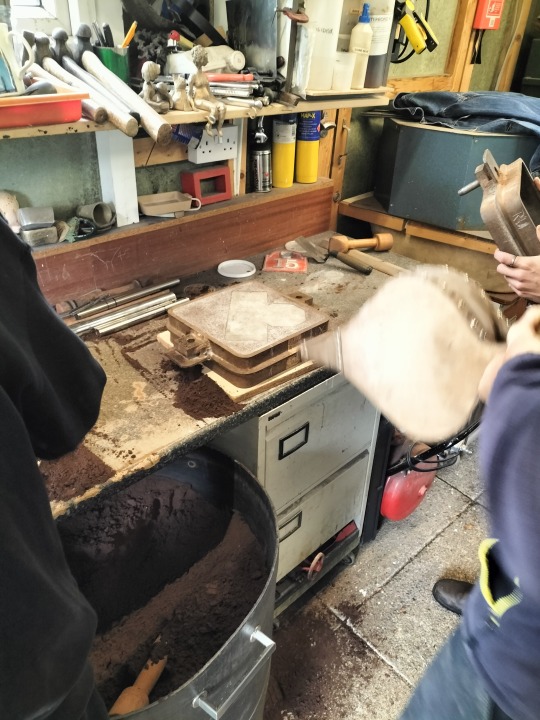
The WORKSHOP pattern is nested in the drag -’eyes down’ box - after ramming with wood dolly on moulding bench top. The welded metal moulding box has been carefully turned over and, before the cope box is located and the cope rammed to make the second section of the complete mould, excess parting powder applied to back of pattern and joint sand is removed with a pair of traditional bellows. This historical-but-still-used old-school air-making device is held away from box to avoid blasting the fragile sand with over-compressed air.
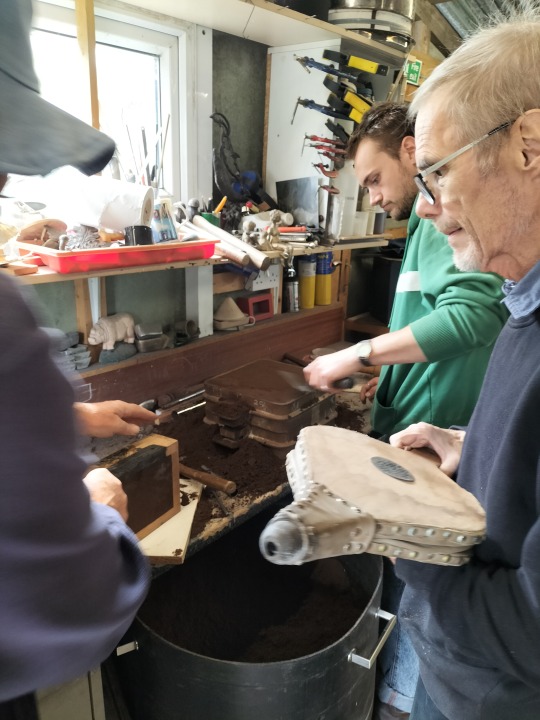
Art coached the Museum of Making team throughout our training visit to Artisan Foundry. Passing on relentless tips and dodges (’hacks’) - learnt through his own empirical practice as a jobbing foundry man and educator - in his thick scouse accent Art passed on priceless knowledge. The background has Arthur ‘sleeking off’ the top of the cope box with a moulders trowel. The next step is to then split the completed mould, withdraw the pattern and cut pouring sprues and risers, as well as vent the cope-section sand where necessary.
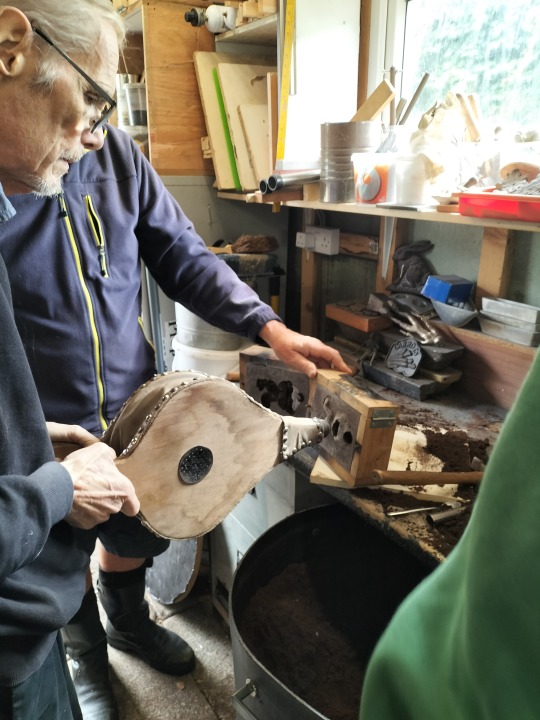
Small scale moulding boxes - in the sub-culture of the maverick ‘Background Foundry’ - can be made from simple homemade square section softwood. Not ideal foundry material, in all-ways, as the hot aluminium or (especially) iron can easily set alight the timber box; spot the combusted charred areas on the DIY ‘flasks’ in these images. To avoid this dramatic, though hazardous, outcome post moulding and before casting these boxes can be stripped from the sand blocks before pouring. Look closely and you can see the ‘loose-pinned’ butt hinges. Withdrawal of the thin wire pin ‘hand-grenade’ style releases the knuckle of the hinge and the box can be opened out away from sand. The box-less cope and drag can be reassembled - closed up as if with traditional moulding boxes - and the metal cast into what is termed in foundry jargon a ‘flaskless’ mould stack.
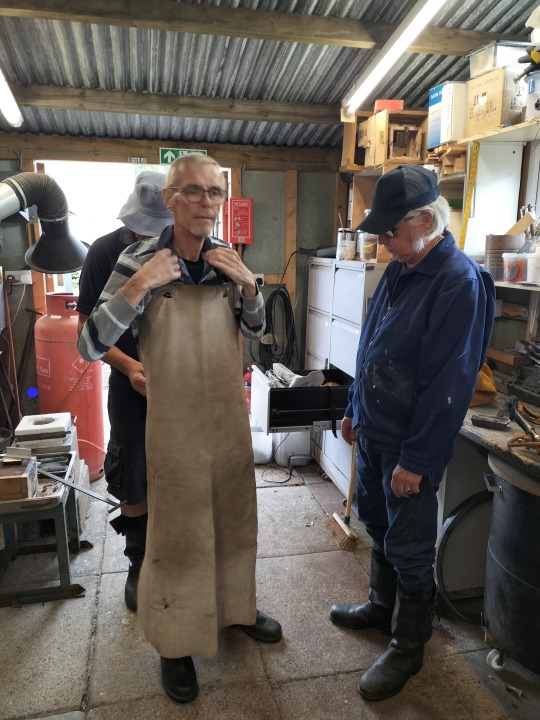
I trained at Stanton and Staveley Ironworks in Derbyshire 1977-1981. As part of our industrial education, we were exposed to the ‘real-life’ of Erewash Foundry. If you have never been inside a dark industrial dirty hot and dangerous foundry, it can seem like a kind of hell-on-earth scene. I recall monster bogeys of hot glowing spitting iron whizzing around the foundry (high in the air suspended from overhead moving cranes) glowing orange against the dark interior of the black sand-dirty foundry. In the late seventies none of the iron casting men or moulders - iron melts at 1200 degree centigrade - were equipped or supplied with regulation protective gear, except perhaps loose moulding boots which had a quick release fastening to allow leather ankle boots to be kicked off when spitted-out dangerous metal splashed inside the shoes and would burn through skin and bone until it came through the bottom of the foundry workers’ foot. Rather than wear thick fire-resistant smocks or leather aprons - as Andy is wearing here - hard Ilkeston men simply sported layers of thick wool jumpers which hopefully slowed down and cooled the ever-present flying spots of molten iron that peppered those pouring iron from oversized industrial ladles into equally oversized industrial-scale sand moulds before they hit skin. PPE advice was a topic Art majored on.

In the spirit of DIY renegade Backyard Foundrydom, Art had improvised a blast furnace from what looked like an old stainless steel camper-van oven and some square refractory bricks. The metal is heated by a propane-gas-bottle generated -flame through a hole in the contrived cupola to play on the small melt-crucible into which the raw aluminium has been placed. In this image Art is plunging a ‘de-gassing’ agent into the red-hot non-ferrous metal to chemically purify molten material before casting. A small section of a broken-up 50mm x 20mm round tablet (about the size of a walnut) is forced to the bottom of the hot melting metal until dissolved. The resulting dross (slag) is then skimmed of the surface of liquidised aluminium.
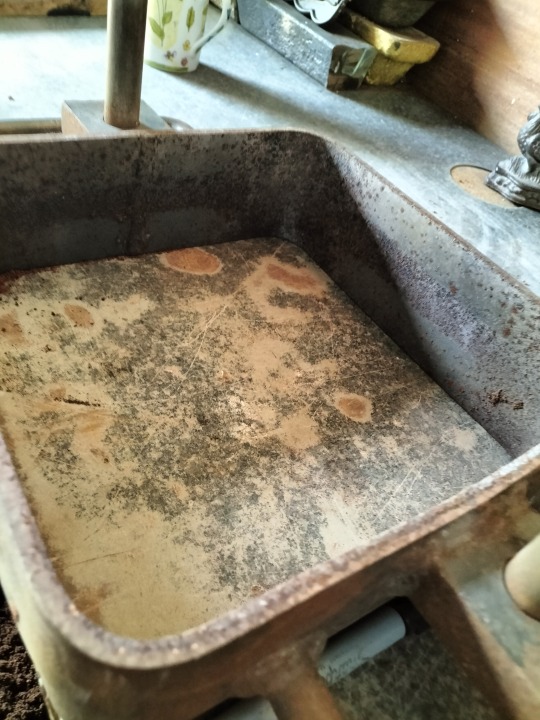
Empty moulding box awaiting pattern. In fact the dowel locating pins at the end of the fabricated-steel box indicate that this is the ‘cope’ top box. The cope pins are dropped through the receiving accurately-machined hardened-steel bushes on the base ‘drag’ box of the two-part mould which has already been rammed up with pattern in situ. Because the drag has no protruding pins the metal container which holds the green sand can be placed around the pattern on the same flat ramming board. As Art pointed out, and I pointed out above, a good aid to remembering that the drag is rammed-up first is the bingo catchphrase “eyes down”.
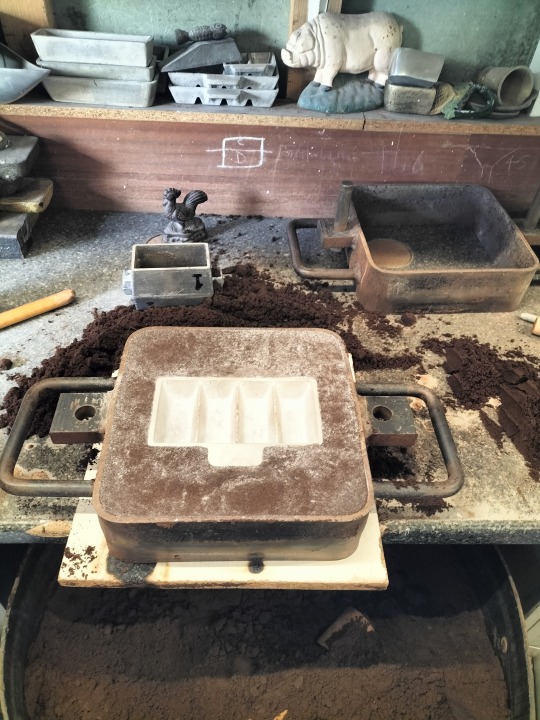
Here you can see the metal ‘shell pattern’ of the ingot mould bedded (post-ramming) in the drag which has been turned over ready to take the cope box and then filled with greensand compacted with the dolly so completing the two-part mould. The pattern is again dusted with parting powder as is the sand mould joint to avoid sand adherence to either surface. Facing sand is riddled onto the pattern for a finer cast finish before un-riddled sand is used to build up the back of the mould.

Sand is kept in a plastic bin covered with polythene and a tight-fitting lid to help sand remain damp and so clay-sticky for successful mould-making. Note the chalk X-X marks on both boxes. This is done to ensure mould is reassembled - post-pattern withdrawal, and pre-casting re-closing of mould - in correct position, i.e. closed in the same end-to-end ‘handed’ relation as the boxes were when rammed up.

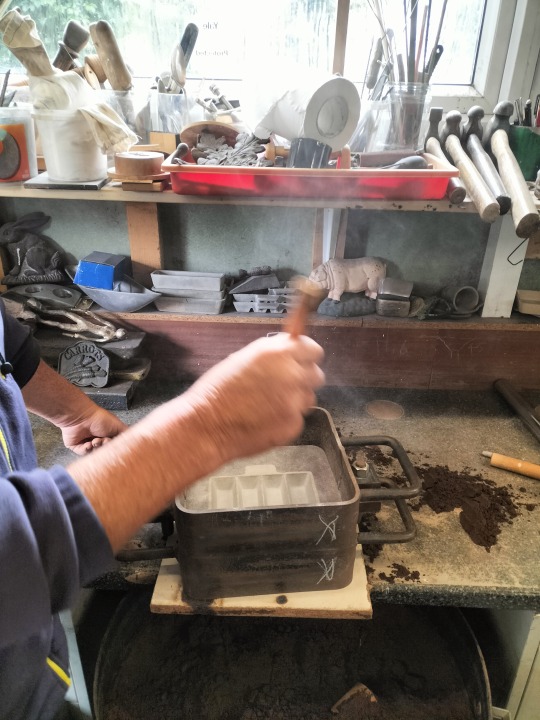
Parting dust, like scotch mist, rising from earthy mould. (It takes your breath away.) Pretty sure in the heyday of Foundry life and Northern Soul ( early-mid1970s) them lad dancers - many of whom would’ve worked in Midland foundries-would have filched parting powder from work to save on the more infamous talcum powder sprinkled on floors of soul all-dayers and all-nighters. Art where you a Casino-Soul Star?

Andy drives the Dolly into the un-sieved greensand to ram up the cope section of mould, taking care to make sure sand is evenly rammed - but not over-rammed since over-compaction of sand leaves fewer micro apertures for hot gases and steam to rise through greensand created by hot metal poured into closed mould - Iron, Aluminium, Bronze, gun metal etcetera. (To allow gases to escape - which can blow cope and drag apart in large moulds - floor hand-moulders used/use a fine sharp rod of about 1.5mm diameter to pepper the sand above the pattern (but not hit the pattern) with vent channels. Art showed us this process using his pinched fingers holding the venting spike as a depth stop to create deep vents, but vents stopping above mould surface.

Cope and drag boxes rammed successfully, the boxes are split, pattern ‘rapped’ and lifted carefully from fragile surrounding sand revealing requisite negative impression of positive pattern into which hot molten metal will run after reclosing boxes.
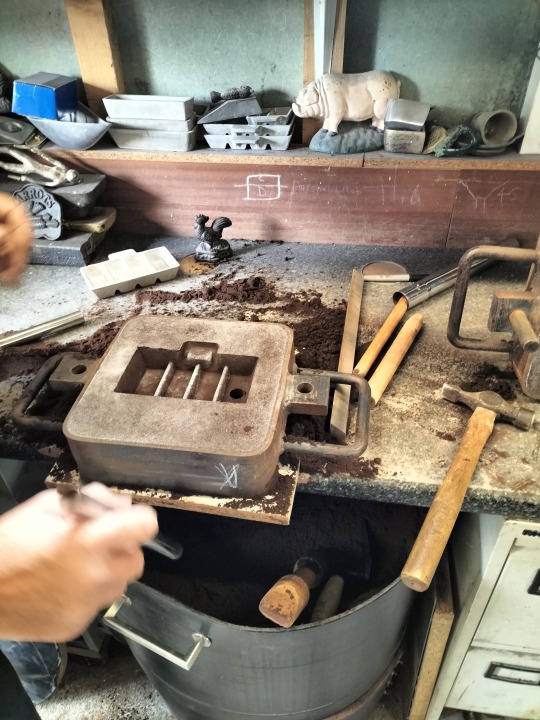
Because this ingot mould is a two part mould in which the ‘cods’ or ‘cores’ which form the metal troughs of the finished ingot casting are ‘self left’ and so would ‘hang down’ if the standard Drag and Cope order had been followed, experienced Art inverted the order and so the cods are raised up from the sand by making the rammed up cope the drag. As in all forms of making there are general rules but no unbreakable ones. In making the cods stand or sit up in the mould this avoids potential situation in which unsupported cods would be suspended - merely held together and to the backing sand by moisture and sticky clay - and as such could snap off when inverted pre-casting. In Art’s right hand can be seen a short section of hollow metal pipe (Ikea wardrobe rail) he has just used, as can be seen in right aperture of mould, to bore a runner hole through the rammed sand to the top of the (upside down) cope. Hot metal will be poured (cast) through the runner - metal running downwards with gravitational forces - into the negative empty cavity of the pattern-formed ingot mould ready to shape liquid plastic metal.
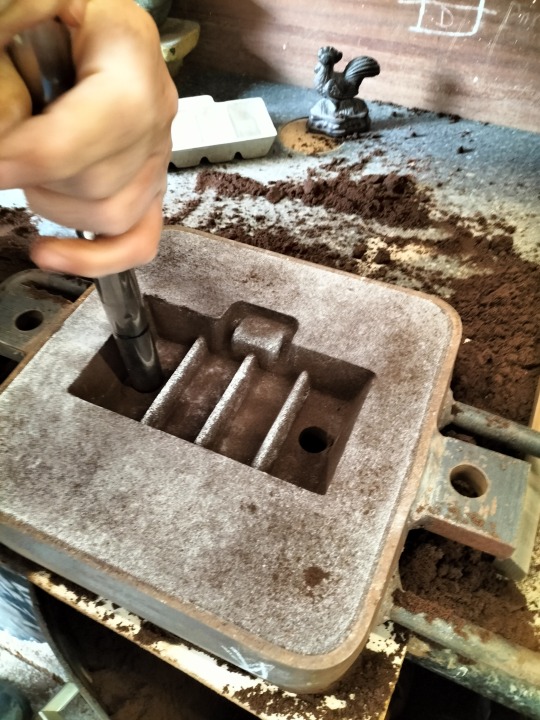
Art boring out the riser through which the metal and air are expelled under diametric pressure from runner and elevated poring basin.
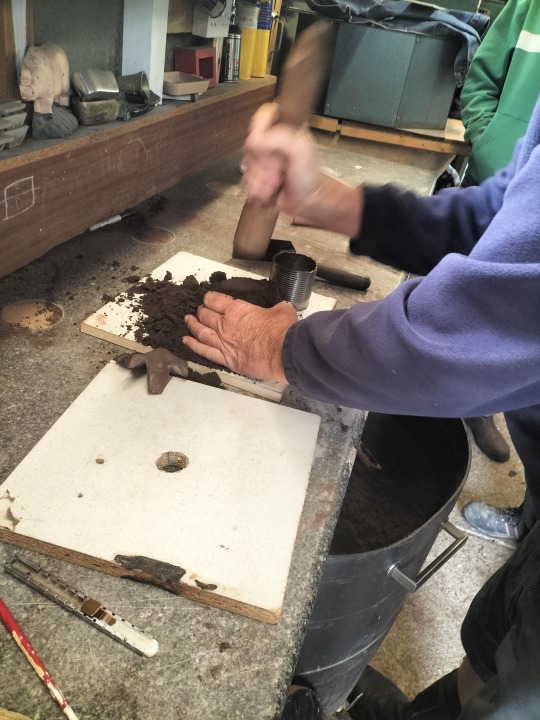
The runner we are to pour the metal down is approximately 20mm in diameter and exits the mould through the top of cope and is connected to underside of finished ingot casting. However, it is difficult to aim the viscous heated aluminium into such a constricted channel from an often cumbersome pouring flask. To aid filling the mould with metal and avoid hot aluminium running free and dangerously over the top of the glassy flat cope sand, down the side of the moulding box, onto the floor, potentially splashing casting-person’s boots - a pouring basin is made up with a wider tapering channel through which the hot metal can enter the narrow runner. The extra height also gives favourable downwards header pressure - like a water tank in a loft - to drive the immediately -cooling-now-unheated metal ‘faster’ into the mould and up the riser. This is often called a basin. The top reservoir of hot metal also aids the shrinkage of the casting. As the aluminium or iron cools down it dimensionally contracts, as I said. As it contracts against the cool sand of the damp mould it needs to be ‘fed’ with molten material. The basin then acts as a surplus tank supplying the hot-thirsty nascent casting with the metal feed it requires. Many larger castings require internal ‘feeders’ which are made to prevent shrinkage in a casting, which means a cast object becomes a failure or ‘scrapper’. As a first-year apprentice I was made to make feeder patterns for the first six months of my training as a patternmaker.

In the maverick spirit of the Back-yard Founder, Art has used an old pineapple ring tin as a flask for his pouring basin; the sprue cutters were crafted from truncated chrome Ikea wardrobe hanging rails.

Casting or moulding boxes don’t have to be heavy metal. This small flask has a removable pin and so the wood frame can be deconstructed and removed from sand mould leaving a ‘flask-less’ block of green or core sand that hot metal can be poured into. Working this way a backyard foundry can make multiple small moulds - and thus cast artefacts - from a single pattern and moulding box in readiness for a serial pouring and crucible firing. The box is clearly made from some simple stock softwood and hinges buyable from a DIY store but painted with red pattern varnish to avoid deterioration from wet sand.
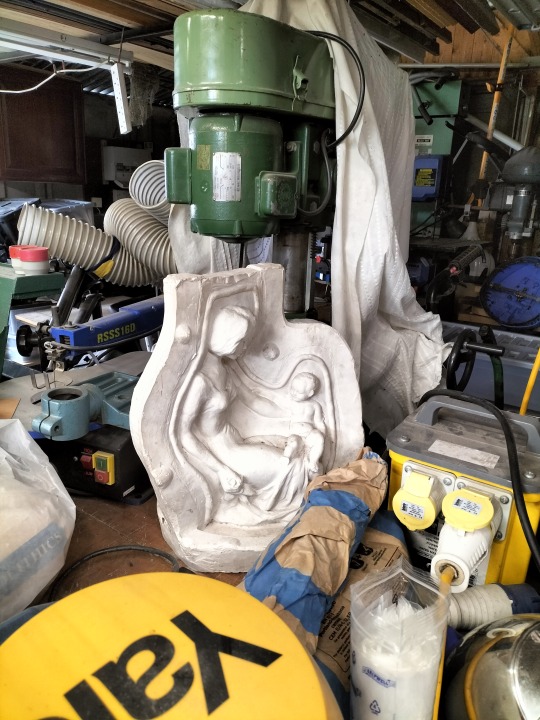
Art and Artisan cast in a variety of materials. Plaster kept out back of workshop.

Small flask used in shrinking casting chicken doorstop with articulated flask.

Artisan foundry shop sells aluminium and bronze ingots for backyard casting community and homemade DIY foundry punks. We have spoken in workshop about the potential clever buzz around running short casting courses at Museum of Making wherein attendees bring in their own used beer cans. Post-weekend binge, smelt the used-up Brew Dog and Special Brew aluminium tins into interesting new products: chicken doorstops, nameplates or other unimagined contemporary material wants. Art cautioned against this: ‘Paint’s toxic lad’, ‘poor quality ally to be fair lads’, ‘you don’t want sticky booze-smelly ally cans hanging around a workshop do yer lad’. In the above photograph the- casting newly-knocked-out-of-steaming-hot-sand-mould is a casting poured into the mould taken from the ingot mould Art uses to cast sellable ingots, used as a pattern. Thus on the day we cast our own ingot mould for Museum of Making workshop for casting ingot bars. The ingot mould was cast from reclaimed aluminium core-wire that is used in high voltage electricity cables -- so you can use recycled ‘found’ metal. A casting course offering potential neo-backyard founders to make their own ingot mould might not grab audience. But if I modify physically the form of the ingot pattern to make a partitioned ingot-like casting and reconfigure (recast) it descriptively as a object into a pistachio-Bombay-mix-Italian caper-kimchi presentation receptacle for table top appetisers, things sound more appetising. As the Italian saying ‘L’appetito vien mangiando’ wisely advocates ‘with eating comes appetite’. I also think casting a small aluminium pie dish has potential. The silvery stems you see poking from the sand are the runner and riser connected to pouring basin.

Various tools and casting ladles needed for backyard foundries. Make your own kit if you can
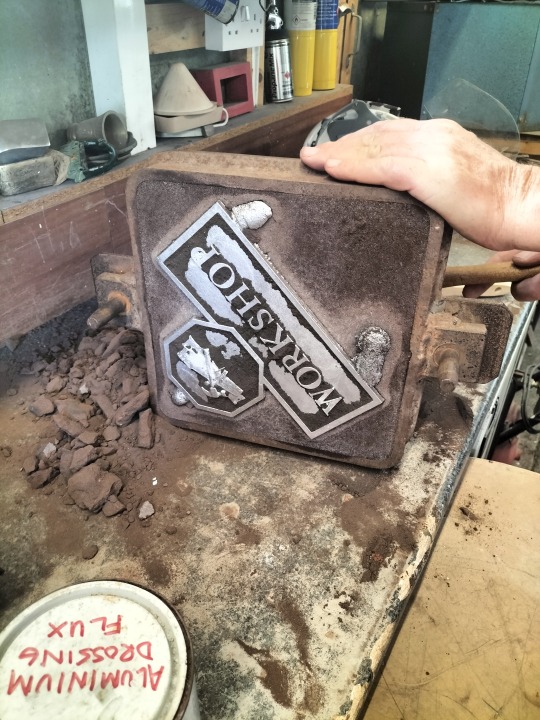

Steve Smith
Workshop-Studio Manager
Museum of Making
February 2023
3 notes
·
View notes
Text
h**k this and h**k that…”: Art(i)factualism, Detournement, Belper Punks, and DIY Making (1719 -2022)
Anything can be used -- Situationist Maxim
The two fundamental laws of detournement are the loss of importance of each detourned autonomous element – which may go so far as to lose its original sense completely – and at the same time the organisation of another meaningful ensemble that confers on each element its new scope and effect. SI Communique 1957
Even writing 50 pages of crap can give a sense of achievement. DBC Pierre Guardian 2017

Dovedale Crescent, Belper, Derbyshire, e-1970s:
A modern housing estate of near-identical detached houses: bungalows, two and three-bedroom dwellings constructed in the early 60s – man-made (unimaginatively) from red orange brick – individual constructions facing snaking black tarmac forming distinctive interconnected roads, streets, nooks, crescents, avenues and closes. Classified by their idiosyncratic banal pastoral signifiers like ‘Beaurepaire’, ‘Millersdale’, ‘Lowlands’ ‘Ladywood’ and ‘Dovedale’ – these were surely ironic places to live since the new-built estate was a brutal imposition of bricks-absurd covering over the once-green fields. A new estate, hacked out of the benign land of rolling hills of Belper because farms, fields, woods, leas, dells, hollows, natural beauty spots, and wildflower meadows were here before the houses and their inhabitants came. 2 Dovedale Crescent Wally Cant – Pit Deputy; 4 Dovedale Crescent Bob Smith - Coal-face worker; 6 Dovedale Crescent Alec Laws - Shot blaster; 25 Dovedale Crescent (facing Alec Laws) ‘big’ John Marshall – coal face worker; 21 Dovedale Crescent (facing Wally Cant) Jimmy Bell - pit worker; 23 Dovedale Crescent a man of unknown occupation and provenance who wore a deerstalker, tweeds, grubby shirt and regimental military tie, thick corduroy britches and thick leather-soled plain shoes, a fellow who, to all intents and purposes, looked like an old English estate owner and looked down on the NCB deferent families who surrounded his Englishman’s castle, with class difference. How he got here nobody knew. Oh, on his face he wore steel-framed bank-manager glasses and sported an ex-RAF handlebar moustache; in socio-cultural terms, then he was a hu-man manmade archetype existentially homological to semiotic-ally important inorganic manufactured objects like the 20th century designer angle-poise desk lamp or a Bahausian architect-designed bent tubular metal and leather chair.
A group of late-teenage boys sit talking on the wooden six-barred gate guarding the entrance to common scrubland known as the back-field. Like the gang of vultures in Disney cartoon film of Rudyard Kipling’s story called The Jungle Book (bored flock birds perched on the thick branch discussing what to do “I don’t know…what do you want to do”? ordinary lads from the estate lads - birds of a feather - were discussing what fashions were now passing and emerging on the local scene in terms of youth wear and companion hairstyles. As they talked together about flash clothes they stared blankly at the essential electric company substation on the opposite side of the road.

Mop-top Vultures, Jungle Book, Walt Disney, 1967
Youth, emerging from the mod(ernist) culture of the late sixties was transitioning-transposing-morphing with velocity into suedeheads via skinheads. The transformation was subtle but sure of itself in style. # 5 clipper blade all over from now-on-in for getting the new suede-head felt-smooth smart combed look, i.e. grown out skinhead #1. Navy-blue wool Crombie coats were still in; nowadays with funereal ‘suede’ collars, red handkerchiefs in top pocket pinned with a new DCFC club badge the size of a tanner gave the look a local tribal sense. Button-down cotton shirts were printed with beautiful checked and colourful designs, manufactured by either Brutus or Ben Sherman. Trousers were smart -- blue or green two-tone ‘Stapress’. A uber suedehead – like the cool Steve Ottowell (Lowlands Road) - now even carried a gentleman’s umbrella. The classic black umbrella replaced the army-surplus green mod parka as protection against the weather. The metal tips sharpened by the suedehead; (converted) reground for fighting on the grinder-wheel at work. Suedeheads were very creative and modified stainless steel combs too. The long tapering handle reformed into a stiletto blade at work on the same workshop grinding wheel trans-formed into a dual tool for doing your hair right or wrong and harm. [1] Working-class youth then – blue-collar apprentices serving the demands of Derby-based industrialism - were reworking the city-gent look – a legacy from the bowler hats worn in the violent (awful) film Clockwork Orange; revising the populist anti-hippy proletarian skinhead fashion. Contra the skinhead and his/her hard-worker look, Suedehead chic parodied or copied the hard-core white-collar post-shopfloor office worker: ‘all of a sudden stepping out wearing a bowler hat…Suedehead represented a more tailored approach to the skinhead aesthetic with velvet-collared Crombie, houndstooth checked suits and brogues’. [2]
Brogues were highly-polished black leather shoes, and handmade by Loake, Grenson or Gibson. Patterned with geometric indentations and raised leather ornamentation this traditional footwear spoke out for the English past. [3] The hard-soled shoes were worn with thin wool blood-red ankle socks which contrasted mysteriously with the dark surrounding serious formal trousers and black shining leather clothing worn against the slack ethnic swinging sixties. [4]

[1] See blog Hegel’s Trowel and Elaine Scarry’s distinction between tools and weapons. The suedehead comb was a tool for personal aesthetic use, styling hair, sharpened for inflicting pain, a weapon: suedehead was a dark cult…P173
[2] Andrew Stevens, Introduction to Suedehead, 2015
[3] In The Wheelwrights Shop (1923) the author Georg Sturt recounts how one of the master blacksmiths he admired marked with dot punch and file a simple geometric pattern, a mysterious enigmatic design ‘come down from some far-off generation’. Sturt called it ‘a simple and ancient decoration. A design very like it (it could hardly be less ornate) may often be seen stamped in leather across the toes of a pair of boots, where likewise it may be of a prehistoric date’.
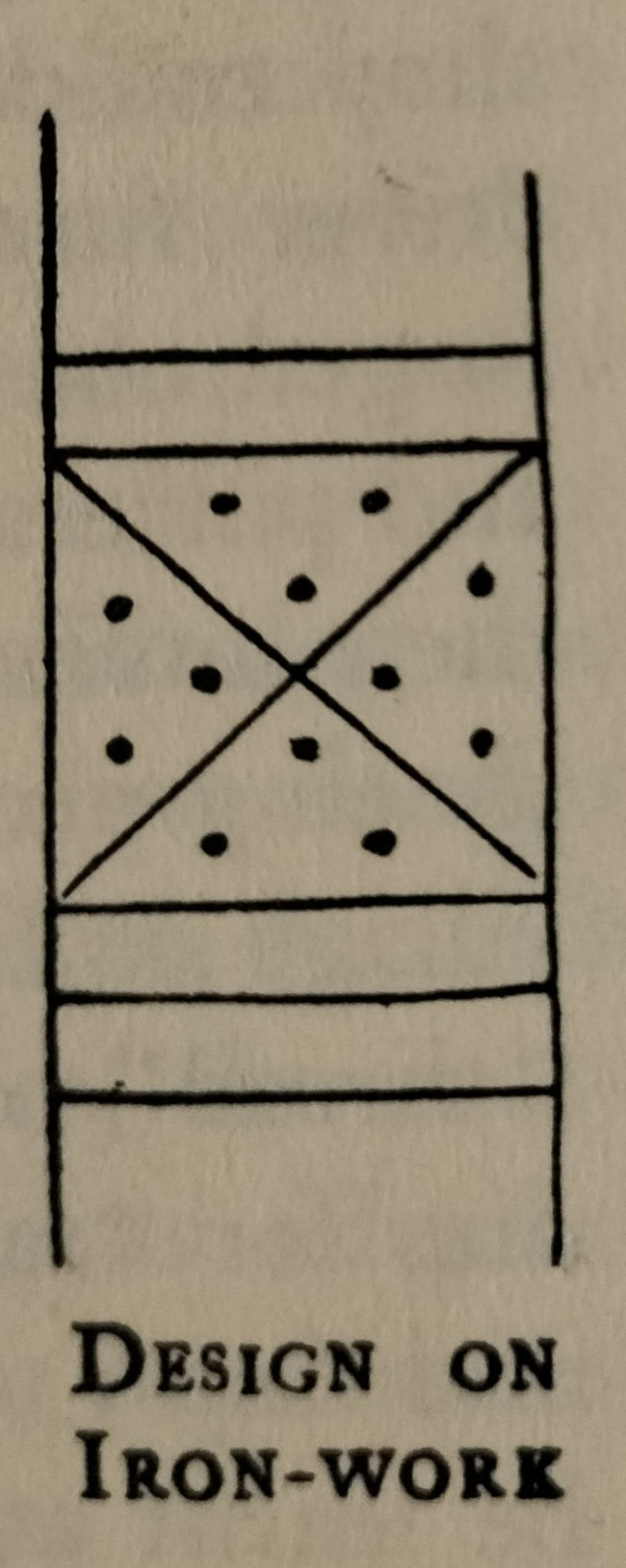
[4] The Language of Things (2009) is a book by Deyan Sudjic. A design historian and commentator on the attraction to modern objects and how they communicate subconscious and conscious meanings to consumers notes that there is a whole family of objects and artefacts that juxtapose red details against black backgrounds from the VW golf GTI to the cult Tizio angle poise light. In all cases they connote argues the critic ‘a faint air of suppressed violence’ in that their original model was the red dot safety catch on the Walther PKK gun. I recently plagiarised (incorporated-subverted this series by including this red-dot-on-black-ground detail on a loom I have made for the Museum of Making. See Detournement and Adam Blenkoe below Weaponising Weaving...?
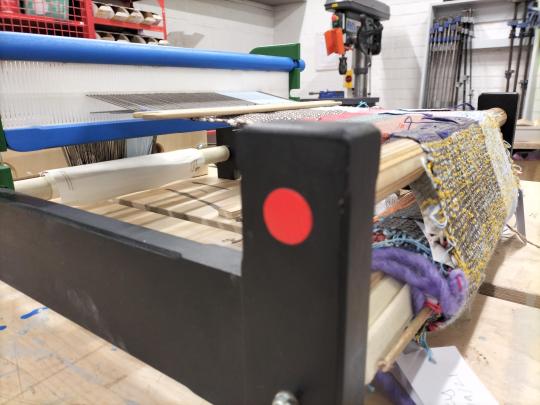
At the end of the day, then, these lads took off their blue-collar steel-toe-capped workshop boots and slipped into their newly-acquired brogues. Not content though with the shoes as they were, they paid a King-Street cobbler to adorn their new leather outsider/insider brogues with Blakey metal ‘segs’. Function-wise, nailed into the soft natural leather undersole of this expensive footwear, the metal tips let into heels and toe sections were crafty customisations – pragmatic additions - to prevent the wearer wearing out the vulnerable animal hide when walking about on tarmac across town; aesthetically segs were sonically transformational making a great CLICK CLACK CLICK CLACK noise on English pavements. The 1970 streets rang with the alarming sound of footwear made musical instrument, and remade walking a violent performance. Amplification of the latest youth culture.
Respected New-Left man Raymond Williams (1921-1988) - the Welsh intellectual at the forefront of the developmental trajectory of what became both lauded (and derided) as Cultural Studies - in his well-known books Keywords and Resources of Hope mentions that there are only two other words in the English language that rhyme with Culture.
1) Sepulture – burial, grave or tomb
2) Vulture – bird of prey that scavenges on carrion.
Hence Culture-Vulture [5]
Despite his apparent radical stance that culture is universal, democratic, classless and for everyone - a thesis developed in his essay ‘Culture is Ordinary’ – he worries that what he identifies as new ‘flip words’ such as “culture-vulture” are malign phrasal attacks against any attachment to learning or the arts -- a stabbing verbal assault on what he would call ‘high-culture’ wounding what he wants to say the word ‘Culture’ stands for. Moreover, worried for high culture, he was surprised that, as the late 60s collapsed and 70s progressed, ‘we don’t yet call museums or art galleries or even universities culture-sepultures’, i.e. dead burial places. For Williams, writing back in the 1950s, milk bars and teddy boys upset the Marxist Williams as valueless bubble-gum mindless ‘low-popular’ culture and kickstarted the serialisation of youth cults: Teddy Boy, Rocker, Mod, Skinhead, Suedehead, neoTeds and then the Punks. To be fair, Williams politically-motivated writing translates a second alternative meaning of the ‘complex’ word ‘culture’ a word sign Williams would say had as its other signified a particular or common ‘way of life’. Yet, still, Ray said the working classes needed saving by equal access to big culture in the form of ‘the arts’: literature, classical music, and top Universities. The cultural problem I had was getting my hands not on Ulysses, Prokofiev or a sporting chance to join Williams at Cambridge, but on the sublime de-culture objects: Gibson-Black-Leather-Brogues. Us Dovedale Crescent lads were culture vultures only hungry for the low-level youth culture meat Williams’ academic elite Marxism had no appetite for. Red socks were easy to acquire. Barbara Blount was a market trader who lived a few houses up from us round the corner in a bigger identical non-identical house. She bought-up ‘seconds-socks’ from a hosiery factory on Spencer Road – Blounts -- and repaired unwanted socks or tights quality-controllers rejected. Repaired, the Blount family sold the saved stock from a bleak cold Ripley Market Place; or from the back of their modern brick garage store. She sold scrap socks to the estate; cheap and fair. Via Barbara I got into my first red-socks, i.e. small signs of self/group expression showing off the way-of-life I wanted to be part of. The shirts favoured by suedehead - Brutus and Ben Sherman - were also cultish objects of material fashion. Out of my reach until finally getting a knocked-down gorgeous sky-blue checked Brutus (life saved again by Barbara Blount) -- I had to imagine/fantasise the dead-man check shirts I found (picked over) at diabetic jumble sales me mam ran were the real thing. Fool’s gold or creative thinking? Whatever, I used the same stubborn suspension of disbelief in my quest to walk in the same shoes as those big youth-culture vultures sat on that three-bar gate. For no matter what them damned Gibson brogues were dead expensive. Down in Belper on the High Street – near the cobblers - was the Army and Navy Stores.[6] In the shop window were some lookalike brogue-esque black shoes with decorative indentations and raised leather applique. They caught my eye. The laces were black and red chevrons but these could be easily swapped out for thin leather laces. They were called Toppos and a lot of us younger lads adopted them in place of – or until – brogues could be got.[7] But like the umbrella and steel comb, they needed adaptation. Blakeys were expensive, and I don’t think the thinner rubber soles would have taken the heavy metal masculine accoutrement so what we did was hammer drawing pins nail-like into heels and toes of the false-brogues to get the metallic clipping sound we wanted to hear. DIY fashioning was a constant presence on our new estate. When mid 70s there was a rock’n’roll revival after Showaddywaddy starred on New Faces and Bill Haley came to play the new brutalist concrete Assembly Rooms in Derby neo-teds at Belper High posed at the youth club in crap paper-thin drape suits bought from the NME back pages in an early manifestation of mail-order consumerism; rag-traders cottoning on to new fads. Now then Barbara Blount started selling illuminous pink, green and orange socks. Surprisingly, since as the son of market-traders he was the first to get to new objects of commercial fashion - and a popular shop in Derby Market Hall sold the real things - my best mate (her son) Simon Blount made himself a Teddy boy bootlace-woggle by deconstructing an unwanted B52 bomber kit from Airfix and using the weapon of war’s pilot to form a passable, but absurd, imitation of the type of neckwear the Teddy boys from Leicester were seen wearing on TOTP. The pilot’s arms were set on a plain back tab and stuck out to resemble cow-horns his visored helmeted head the contrived animal’s skull/head. He left it all white. It had a sort of Greco-Roman classical sculptural style.

Showaddywaddy, circa 1974
[5] Raymond Williams, Resources of Hope: Culture, Democracy, Socialism, (London, Verso, 1989), p 6.
[6] From here, post-suedehead times (after a temporary Ted– revival) – we would buy large navy-blue sailor’s bell-bottom trousers as ‘found’ skinners as Bootboy slowly evolved from suedeheads
[7] A pair of Toppos became an actual well-known (socio-historical) youth-culture object in Belper, recognised as a credible alternative to Grenson brogues. I was talking with Tim Finch in The Grapes pub Belper a few years back. Tim, a life-long youth-culture follower and knowing modish fashion exponent, says they were called Toppos after some kid called Toppo who recognised their stylistic worth and set the phenomenal trend off; in our town at least.
Another guy who eventually came to embrace constructing his own articles of fashion was Robinson Crusoe. Shipwrecked and alone with no skills and experience of making things Daniel Defoe’s gentile everyman of the book of 1719 had to manufacture his own clothes, utensils, baskets, tables, chairs, general estate, and interestingly an umbrella. i.e. Crusoe made himself by necessity a tailor, weaver, potter, carpenter, architect, boat-builder, stonemason, baker, toolmaker and candlestick maker. He got his materials from repurposing and recycling the wrecked ships commodities and materials (especially dead sailor’s clothes) and those of the raw natural world where he found himself a past-passive consumer desperate and thrown into commodity poverty which made him be active. On the island washed up money he had no use for: ‘I smiled to my self at the sight of this money. ”O drug!” said I aloud, “what art thou good for?’
‘And now in managing my household affairs, I found my self wanting in many things, which I thought at first it was impossible for me to make, as indeed as to some of them it was… I began to apply my self to make such necessary as I found I wanted, as particularly a chair and a table; for without these I was not able to enjoy the few comforts I had in the world; I could not write, or eat, or do several things with so much pleasure without a table.
So I went to work; and here I must needs observe, that as reason is the substance and original of the mathematicks, so by stating and squaring every thing by reason, and by making the most rational judgement of things, every man be in time master of every mechanic art. I had never handled a tool in my life, and yet in time, by labour, application and contrivance, I found at last that I wanted nothing but I could have made it, especially if I had had tools; however, I made abundance of things, even without tools, and some with no more tools than an adze and a hatchet, which were perhaps never made that way before, and that with infinite labour…
However, I made me a table and a chair, as I observed above, in the first place, and this I did out of the short pieces of boards that I brought on my raft from the ship… ‘
Elaine Scarry - who I cited on making in Hegel’s Trowel - writes about Defoe’s intent to expose human making as at the heart of autonomous healthy modern enlightenment subjectivity.
Crusoe begins by being a person who “makes” either as a result of acute need (where willed artifice is the only available strategy of self-rescue) or as a result of accident (where artifice entails the human genius of observing a wholly unintended outcome), but increasingly becomes one who wilfully “makes” merely to make. That is, in addition to transforming his external world, Crusoe has transformed the nature of the act of creating itself; he has remade making; he has remade the human maker from one who creates out of pain to one who creates out of sheer pleasure.
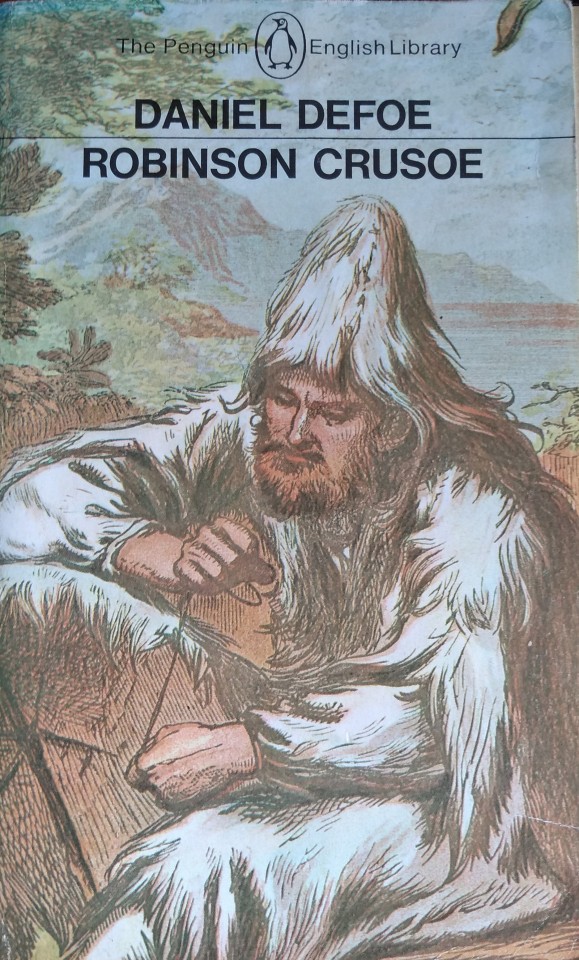
Robinson Crusoe, Daniel Defoe, Penguin, 1981
May 1956, some situationist writing somewhere in Europe:
Detournement as Negation and Prelude
Detournement, the reuse of pre-existing artistic elements in a new ensemble, has been a constantly present tendency of the contemporary avant-garde both before and since the establishment of the SI. The two fundamental laws of detournement are the loss of importance of each detourned autonomous element – which may go so far as to lose its original sense completely – and at the same time the organisation of another meaningful ensemble that confers on each element its new scope and effect. Detournement has a peculiar power which obviously stems from the double meaning, from the enrichment of most of the terms by the coexistence within them of their old senses and their new, immediate sense. Detournement is practical because it is easy to use and because of its inexhaustible potential for reuse. Concerning the negligible effort required for detournement, we have already said, “The cheapness of its products is the heavy artillery that breaks through…walls of understanding”. (Methods of Detournement, May 1956)
Detournement has a historical significance. What is it? “Detournement is a game made possible by the capacity of the devaluation” writes Jorn in his study Detourned Painting (May 1959), and he goes on to say that all the elements of the cultural past must be “reinvented” or disappear. Detournement is thus first of all a negation of the value of the previous organisation of expression. It arises and grows increasingly stronger in the historical period of decomposition of artistic expression. But at the same time, the attempts to reuse the “detournable bloc” as material for other ensembles express the search for a vaster construction, a new genre of creation at a higher level. Any elements, no matter where they are taken from, can serve in making new combinations…Anything can be used. Situationist International Anthology, Edited translated Ken Knabb, 1981)
To explain Detournement – the hybrid aesthetic outlined in the SI communique - we can turn to Asger Jorn’s avant-garde painting Paris By Night (1959). referenced above.[8]
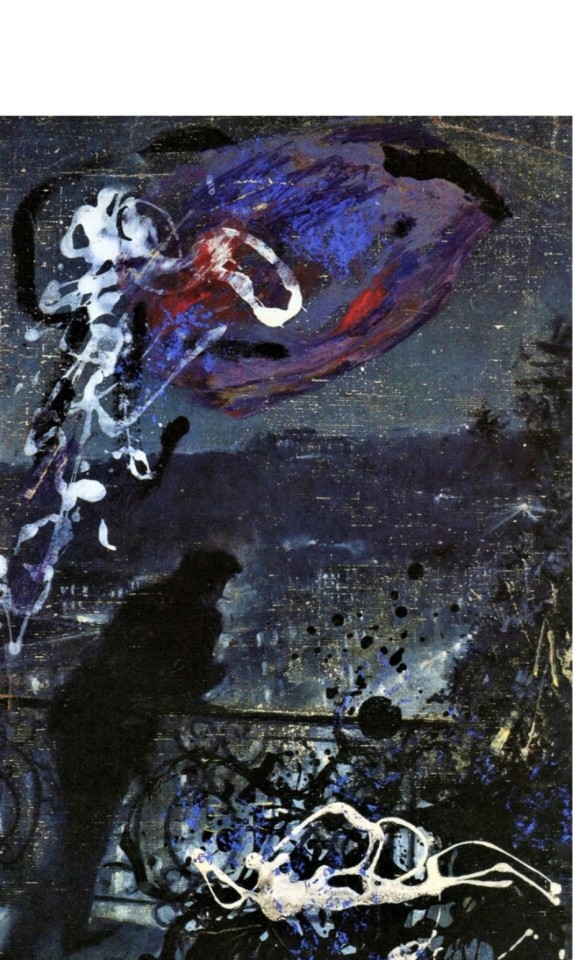
Paris By Night, Asger Jorn, 1959 Oil on Canvas
Rather than create (buy) a new painting, Jorn would salvage a piece of obsolete art, in this case a romantic lone figure gazing into the Paris night, from junk shops.[9] Taking these discarded portraits, Jorn added expressionistic patterns in the style of Jackson Pollock - an act of experimental cultural intervention he called a modification. The political import of the modification was that it allowed an artist to simultaneously breathe ‘new life’ or value into two different devalued cultures, in one straightforward gesture. The received dead-art of bourgeois naturalistic painting received renewed input from the avant-garde, whilst the avant-garde retained its status within the field of culture, a status suggested by the new art’s stubborn situation within the existent framing of the canvas or wooden picture frame. Through this new cultural arrangement Jorn gestured to destroy or devalue a passé art form - classic portrait painting, say - whilst, through reclamation or salvage, re-valued art’s essential potential as a carrier of meaning. Jorn’s experimentation, then, was not about re-making a new art or ‘ism’, ignorantly destroying the old ‘isms’, but ‘playing around’ with orthodox cultural heritage, amalgamating diverse forms of cultural production into revolutionary new conglomerations. Like the SI, the avant-garde Jorn wanted to ‘reinvent’ and ‘bankrupt’ culture on an ‘entirely new basis’, though, at the same time, acting in and with that culture.[10]
[8] ‘Paris By Night’ Jorn detourned painting analysis cut and pasted from doctoral thesis Worker’s Playtime, Steve Smith, 2004
[9] Crow, The Rise of the Sixties, pp. 50-51.
[10] Knabb, Situationist Anthology, pp. 111-113.
Detournement = DESTROY = Creation

It is this devaluation and re-valuation of one form of cultural expression at the expense of the other - the alchemical change brought about by experimental modification - that interests detourners and two women from Derbyshire; both work in fashion.

Derbyshire Maker Vivienne Westwood wearing detourned white-office shirt – Seditionaries - Circa 1976
Auchencairn, South-West Scotland, 2008:
17th June 2008. BBC Radio Scotland. Vivienne Westwood is live on air talking about her work. She says in her still-strong peak-district accent (slow and considered):
I’d been making clothes with holes and rips
in for quite a while.
I’d tear the cloth and
machine around it. I was making clothes
with holes in. People would come into the shop and
moan about the price.
I never understood why
they didn’t go home and make their own clothes
with holes in or rip the clothes they had.

November, 1976, Belper High School: In a state-of-the-art Derbyshire comprehensive school - under diffused delayed pressure from the subversive philosophy of a well-documented situationist led counter-culture of May ’68 - a movement bent on collapsing high and low cultural difference – a school led by an (allegedly) communist red-head and a progressive education policy that protested against the eleven-plus and so ripped up the difference between grammar and secondary modern education, high and low culture, school and non-school life - hip kids - some of whom end up in sixth form doing art - crowded around an opened New Musical Express; a cult-pose pop newspaper I despised as much as The Guardian) for it signified violent class distinction and affected commodity adoption by those who bought and drawled all over it like daft dogs. That said, there is the feint idea that something cultural is happening in England; a thing emergent from the sticky residual and stubborn dominant culture to paraphrase the aforementioned Raymond Williams. Inside the bohemian rock-world rag is a DIY identikit sketch of what a ‘punk rocker’ must dress like. And, not long to go from this real now, the “rough-tough” Clash (London punks) are playing a concert in Nottingham. After maths and before geography Alison Taylor, a student at Belper High School, strides down to the Oxfam shop on the still-a-mill-town-for-now High Street (or was it the ‘dead-man’s-shop on the Market Place?) with two lads from that comprehensive culturally-maligned detourned school. The future pro-textile-designer/maker buys two differently patterned formal suit jackets. Takes the unwanted old-man clothing home to Ambergate.[11] That night, in her bedroom-as-atelier, razor blades both out-of-fashion thin-lapelled jackets SSSHHHHKKKK down the middle seam. She sews them back up together – sutures rough as you like – and brings the two split rejigged garments back to school the next day. Not the next day, the local lads - early Derbyshire punks - go to see the group from the capital; stood in Nottingham Palais, wearing the doctored detourned jackets. Later in the year one of these punk rockers would get beaten up by Teddy Boys on Abbey Street, Derby, after leaving a shop selling commercial punk clothes called ID.
Alison Taylor, Belper High School, 1976

[11] Alison Taylor studied art at Hull Art College. She is a successful design-maker and has an artisan textile company in West Sussex.
October, 1976, Modern Belper – A New Housing Estate: A quiet clever man, Alex Paxton, lived a few doors up from us on Dovedale Crescent. He, like most of the others on this new 1960s Belper housing estate, owned his own house. Our house, like up to twenty-more, was not owned by us: it belonged to the National Coal Board (NCB). The nationalised industry purchased these new state-of-the-art houses to entice miners to old-mill-town Belper -- from South Scotland and County Durham -- to dig out coal in the Derbyshire pits. The coal dug up made electric. Some aspirational people on our modish ‘white-heat-of-technology’ street resented our social-cultural presence smearing their residential art and commodity dreams. Even though the miners were making electricity to drive their new consumer goods - Black & Decker saws, drills or jigsaws as well as TVs and refrigerators - they rejected the miners as an unwanted addition; black-collar stains on their social scene. A petition was circulated amongst residents to put a block on taking our place on the street even before the first miners arrived. What do I think today, about this coming-together? Was it accidental? Planned out? Socio-cultural Detournement? NCB left-wing thinkers creating a Jornian cultural intervention, making a modification, creating a new ‘Belper by Day’. Growing up on the estate the prole kids of the miners and the offspring of upwardly mobile toy shop owners, market traders, Deb chemists, self-employed electricians and skilled craftsman - products of two tribes - notionally clashed economically and culturally but also got mixed up with each other in an everyday picture. A sort of social alchemy came about and notional NCB hacking had made a new situation. A few of us naturally – post suedehead - became punks. Well me and the Deb chemist’s son; the original owner of one half of Alison Taylor’s hybrid schizoid jackets known as Paul Hough.
Hacking Life:
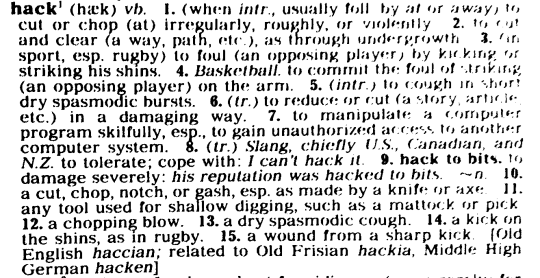
Poly(semic)
Nowadays living in the 21st century everywhere it’s hats off to hacking: ‘Hack this’ and ‘hack that’. There are 24-hour hack spaces in Leeds, Bristol, Manchester, Nottingham, Sheffield, Leicester, London: Hackspace UK is here to stay. I’ve seen ‘apron hack’ events at work; heard of pubescent international computer hackers on local news who live in Codnor, Portslade, or Fife; during a typical day I say self-critical things like ‘what a hack’ when I see or do bad workmanship; AVG watches out for me scanning for dangerous folk that hack your computer. Dominic Morrow told me on a visit to Nottingham Hack space “some-here-people-want-to-hack-the-state”. You can be hacked off, miserable and down in the mouth about something – the state or status of making perhaps (or people running you down for being miners). Aggression brought about by being hacked off can lead you to hack something to pieces; even death. Newspaper ‘hacks’ cut-up stories and quotes - distorting text to a new end and can produce hack writing, texts ‘banal, mediocre, or unoriginal’. Leicester hack space gang - anarchistic to a person - always managed to hack the communal beer barrel when we had re: make parties: ‘we’re only ‘ere for the beer’ and would give you a kick on the shin (a hack) to get to the bottom dregs of the local-brewed ‘Ay Up’ kegged ale before you could. Is the word/concept ‘hack’ what my old English lecturers would call critically a polysemic ‘floating signifier’? A sign/word/lexeme that can mean or be made to mean so many things - denotational with spiraling connotations - by so many different in-crowd users (like its sister word ‘disruptive’) that its position as a major mention-tool in contemporary maker hipster overuse renders it banal and unoriginal? Can you hack the word hack or hack hackerworld? Or is hack a positive case of a democratic general ‘unlimited semiosis’, a phrase borrowed from the proto semiotician Charles Pierce and adopted by Umberto Eco which describes the uncontrolled life of a sign/word in language?In my dull mind to hack describes a sort of contemporary hijacking, a commandeering of an artefact and then cutting it up for an adaption. As synthesiser, hacking culture re-makes the selected object into something useful and not of its originally designed purpose as commodity (for commodities as objects are what get hacked most): Toppo’s shoes and drawing pins; a green landscape in Belper carved up into housing estate; the private street hacked into by a mining community; grammar school clashed with secondary-modern education to form an new alloy called the comprehensive; plastic B 52 Bomber model becomes repurposed as teddy-boy paraphernalia; Oxfam jackets cut up and reformed, Crusoe hacks his ruined ship and makes an interior for his cave, and Westwood’s stencilled shirts adorned with zips and holes. Back in 2013, during the Re:make experimental phase of manufacturing a new Derby Museum of Making, a Rolls Royce engineer put together some plastic milk crates and with a pair of scissors cut up some thick cardboard and made a prototype back that slotted into the already-in-place slots of the milk crates. The back was modified and CNC cut from 12 mm plywood and 8mm clear acrylic. It became the infamous crate chair. The museum manufactured its own chairs; DIY self-production a radical gesture of active making against the passive buying ethics Westwood identified at her Kings Road shop SEX. Visitors asked ‘can we buy these chairs from you?’

Crate Chair, Co-produced, 2013, plastic, felt and plywood
Hacking is voguish then but not new, not now. I can think of two other interconnected examples of hacking; one historical the other contemporary (if you count the mid-70s as historical and today contemporary). Both activities and actors as ‘hackers’ used a common-garden DIY store electric jigsaw. In 1977 I used an inverted jigsaw at Abbey Patterns Derby to make a plywood pattern for a decorative grate. It was probably made by Black & Decker. Adam Blenkoe brought his modified Makita jigsaw to Derby in 2016.

Jigsaw Illustration, Woodworkers Bible, Alf Martensen,
Abbey Patterns, Derby 1976:
My first experience of any form of patternmaking - which is my original first-choice trade - was arranged by Alex Paxton. Some-thing called ‘a patternmaker’, he, as I have said, owned his own house – he was a business partner in Abbey Patterns, a small master-shop in Derby. Alex as patternmaker was a skilled man. We knew Alex was a maker because Alex’s wife came down to our rented house and inter alia mixed with us spoil of miners.
Back in 1976, still a schoolboy, while my mates were off to buy punk records after seeing see the Clash (modishly rejecting Tangerine Dream, Deep Purple, Genesis -- yada yada) I visited Abbey Patterns workshop one Saturday morning for a taster session. Arranged by my father via Alex via Pam his wife – I was invited to try patternmaking, see if I liked the strange esoteric trade, had aptitude for the rationally complex craft. Abbey Patterns was then -1977 – manufacturing in a tiny cramped pattern-shop in a post-residential converted house on Gerrard not Abbey Street. I got to the ‘hacked-out’ Derby house by bus. Prompt 8am. I was set to work right from the off. No time to lose. I had a single tea break when they the two partners stopped for ten minutes, until stopping the week’s work at 12pm. My task was to work on an improvised machine the patternmakers had contrived to shape a small pattern – approximately 300 x 300 mm square – the kind of pierced grate-cum-screen you see on the pavements of red-brick terraced housing forming cast-iron apertures that let air and light into small underground cellars, walls, and chimney stacks. The contraption was ingenious.

They had inverted an old Black & Decker/Wolf/Bosch Jigsaw, and removed the blade for a small wood file. The bed could tilt to create required degrees of draft or taper for patterns when machining intricate shaped work. A full-sized paper photocopy of the required intertwined design was glued with PVA onto a small sheet of 12mm birch plywood. The laminated ply product was perfect for making a pattern with fine interlocked sections because the pattern would have structural integrity at all sections of the pattern, thus resisting breakage (or shrinkage) in the foundry environment. It saved time-consuming jointing as might be expected in pre-plywood classic purist pattern practice and construction since the membrane of birch laminations made an integrated and thus strong stock material. However, plywood is tricky and hard to ‘pare out’ with traditional chisels and gouges. Conflicting grain directions add strength but carve poorly. A file can therefore abrade the material evenly and flatly.
The black lines on the white paper indicated to me where I had to file to. The fretwork design was cut as close to the line possible – potentially with the same customised jigsaw contraption using a blade rather than rasp or file. (This is pre - CNC existence. Today the design would simply be imported from a digital drawing package, into a tool-pathing software such as Vectric 2D Cut or v-carve, and automatically routed out with precision tapered hi-tech cutters. The CNC operator a semi-skilled presence. So, in some ways the inverted–hijacked jigsaw I used at Abbey Patterns prefigured this need for mechanised patternmaking. Abbey Patterns made a lot of grates, and detailed small scale cast-iron work that can still be seen on the Derby streets -- if you are smart/interested enough to spot them. In this way their business needs and technical nous drove forward their creative DIY product design, inventive in-house toolmaking. Amazed at what I had seen, I left Abbey Patterns when they said it was time to go home catching the red Trent 90 bus back to Belper. Looking back in time these skilled patternmakers didn’t self-consciously call themselves hackers.

Abbey Pattern Street Grate, Cast Iron, Derby, 2022
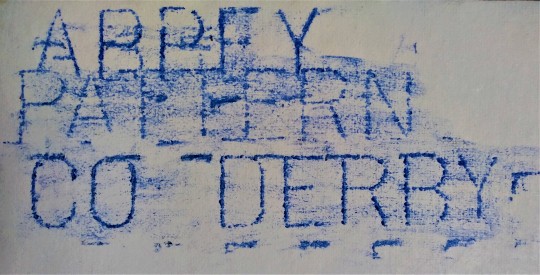
(‘anything can be used’) - rubbing Abbey Pattern Co grate – blue charcoal on paper, Steve Smith, 2018
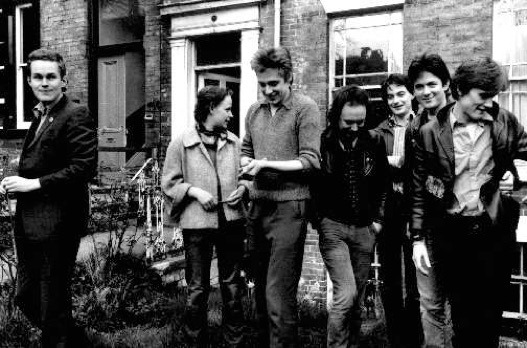
The Mekons, Leeds, circa 1976
440 Kingsland Road Workshops, London, 1992--“Never Been in a Riot”: Mark White was the first lead singer with the Leeds-university based punk groupuscule The Mekons. Around about 1977 The Mekons put out a delicious scrappy amateurish single “Never Been in a Riot”. Never Been in a Riot was the avant-garde groups anti-masculine pink repost to the butch ‘rough-tough rock’n’roll revolutionary red art of The Clash and their song “White Riot”. These softer punks were thus ideologically detourning the hard-core detourners -- hacking to bits the SI influenced cultural big-time punk-rock hackers (and the punk rock movement at large) posing in their stencilled political sloganeering shirts (Red Guard, Brigade Rosso) rebel anti-fashion contradictorily made popular and fashionable by Viv Westwood. Nowadays he was not a punk singer, but a humble maker in our cooperative London workshop: 440 Kingsland Road, an old print works converted and chopped in two – hacked into a ground-floor woodwork shop and first-floor graphic design studio - in Hackney.
Fast forward to 2015. I am back working with a hacked jigsaw again in a Derby workshop. Returned, I am part of a team returning making to Lombe’s Silk Mill – the world’s first factory. In the workshop is a maker from London: Adam Blenkoe. Up-and-coming, a neo-21st century maker up from the East London Hack space – he is running a morning weaving workshop. Apart from Adam and me, students are all women. Interested in traditional textile crafts - embroidery, dressmaking, tapestry, weaving – attendees are disturbed to not find scissors, sewing machines, overlockers, embroidery hoops, needles and thread, paper patterns, plastic cutting French curves arranged on the cutting table, rather a selection of thick art books: thick cult texts on the art of Bauhaus, Russian constructivism, De Stijl.
There was no sign of a loom either. There was simply a Makita jigsaw bolted rather amateurishly to an aluminium off-the-shelf mobile CNC bed. Driven by electric stepper motors that pulsed right, left, vertical and horizontal, forward and back the jigsaw could be driven in micro movements along a digitally-programmed X-Y-Z axis. Like the inverted machine at Abbey Patterns the orthodox functional saw blade had been removed and replaced in this instance with a broad-gauge needle.
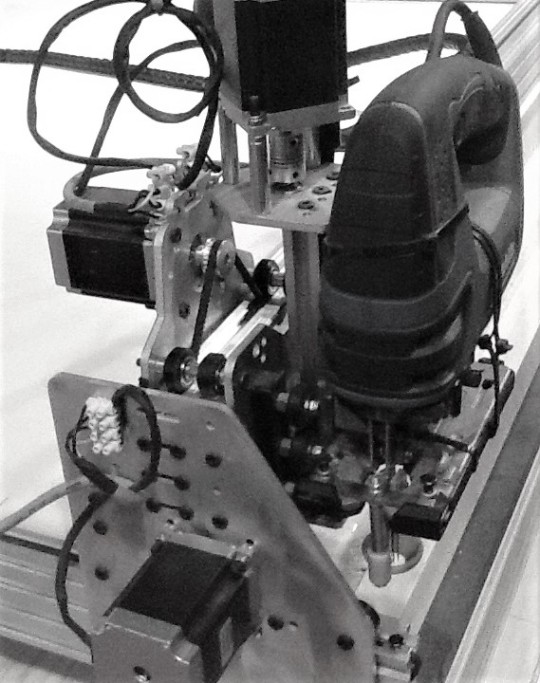
Commercial Makita Jigsaw Bolted to CNC Frame
The women were encouraged to select abstract designs from the art books on the table. Then, having selected one avant-garde pattern, students cut felt or cotton samples replicating the geometry they had found in the coloured plates.
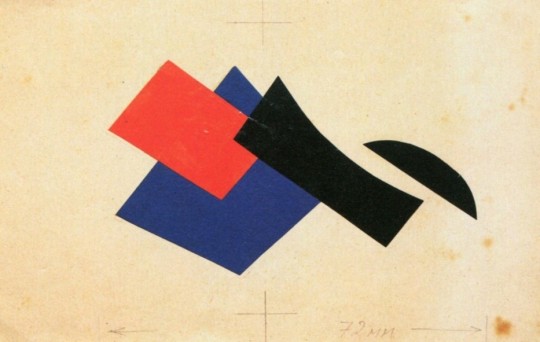
Liubov Popova, Embroidery Design For The Artisan Co-operative Verbovka, 1917 (cut-and-pasted papers on paper)
The bright primary-coloured sections were then individually placed on a large single canvas back cloth over which the jigsaw sat still waiting to be activated.

Adam Blenkoe and Student Loading the Jigsaw Loom
When each art-weaver student had added to the cloth picture – thus constructing a communal patterned wall hanging (à la Lyubov Popova, Alexander Rodchenko, Annie Albers) - Blenkoe flicked the electric switch on the CNC.
Fired up by the powerful current of the mains electricity the jigsaw ranged over the cloth to a pre-set quilted grid pattern and, at the same time, as the probe-like needle oscillated in a highspeed pecking action, stabbed the felt through the background material. Sort of tattooing the textiles the constructivist cum Bauhausian inspired synthetic designs were infused deep into the skin of the white cloth. When the noisy jigsaw motor stopped running, returning quietly to its fixed X-Y-Z home position (the workshop sounded like a hi-tech weaving shop as the needle click-clicked-click-click clicked back and forth like speed shuttle making -- a kind of metallic sonic composition) the tapestry was complete. In stark contrast to the thin hard lifeless 2D reproduction masculine modernist plates the workshop attendees’ patterns were lifted from – the dead lifeless art prints were paradoxically facsimiles of historical designs for wall hangings or rugs - the plagiarised Silk Mill weaving had depth, softness, life, texture, warmth, a non-masculine aura. Post-man-work; maybe. Moreover, rather than simply passively (spectacularly) consuming the geometric abstract designs from the art book as commodity, the weavers-in-the-workshop had actively produced their own tangible material original self-made artefact.

Finished Constructivist Wall Hanging
Circa 1977 Alex Paxton, as I have conjected, didn’t know he had hacked the small bladed shop-bought DIY power tool – designed for amateur woodworkers to cut curved shapes – just like some of us didn’t know we were punks until the NME posted that picture of what a punk lookalike looked like. But I suggest, Blenkoe a 21st maker knew he was a hacker hacking this electric jigsaw. Obviously, Adam at the Museum of Making workshop Derby, wasn’t punching-out the State, but coloured felt. Yet, that said, there is for me, if no one else (even Blenkoe), hard political import in this radical soft textile-hacking gesture. Like The Mekons chant “Never Been in a Riot”, his antimacho punk art was a deft retro counter-critique within trendy macho-modernist (hackneyed) critical thought movements. His target - if not the Clash – was perhaps butch graphic aesthetics or cultural art revolutionaries and their sanctification of hard-edged constructivist art; Blenkoes workshop and his co-opted women students - was hitting back with a detourned form of constructivist/suprematist art ‘modified’ and emasculated with a sub-Jornian fuzzy textile making attitude. Self-conscious - perhaps ironic - metro-cosmopolitan Adam was cutting up – emasculating – man-making craftwork itself. Blenkoe took a masculinised woodworking tool ‘the jigsaw’ (and CNCing – a staple of the new ‘techno’ male-dominated maker movement) and co-opted ‘mediated’ it for a ‘feminised’ arty-crafty weaving course. One in the loom or jigsaw for men running all the male workshops in the world. Bauhaus detourned – constructivism hacked off. Hacking, then can be practical, technical, political or cultural.
No women at all if possible into the workshop, both for their sakes and the sake of the workshop…Weimar Bauhaus edict 1923
At the ‘revolutionary’ Bauhaus workshops, it is pointed out, the early years (1919-1920) the Council of Masters passed resolutions that aimed at benefitting the large numbers of women students attending the school. The new Weimar Constitution assured women unrestricted freedom of study. In his inaugural speech to the Bauhaus students Walter Gropius, the Bauhaus director, made express reference to the women present. His notes referred explicitly to ‘no special regard for ladies, all craftsmen in work’ and ‘absolute equality of status, and therefore absolute equality of responsibility’. Yet as early as September 1920 Gropius was backtracking. And suggesting ’no unnecessary experiments’ should be made and that women should be sent directly to the weaving shops having completed the mandatory Vorkurs (the compendium multidisciplinary craft course 21st century art foundation courses came from). If weaving was refused, rebel female students were directed towards bookbinding or pottery. No women were allowed to study architecture; female student cohort made unwelcome in the woodwork shop.

Bauhaus Weaving Studio Loom
It may be noted that the Weimar Bauhaus presented a number of fundamental obstacles to the admission of women and that those who overcame the first hurdles were forcibly chanelled into the weaving workshop. Much of the art then being produced by women was dismissed by men as ‘feminine’ or ‘handicrafts’. The men were afraid of too strong an ‘arty-crafty’ tendency and saw the goal of the Bauhaus – architecture – endangered. (Bauhaus archive, 1919-1920, Magdalena Droste)

Bauhaus girls looking out from weaving shop, circa 1925
Bolshevik art in the Soviet Union, in particular ‘constructivism’ and its related movements ‘suprematicism’ and ‘productivism’, post-1917 revolution, looked to deconstruct the bourgeois world epitomised by a residual adherence to a ‘his’ and ‘her’ conception of society and human expression. The Russian avant-garde – of which Liubov Popova as a rare woman art-worker was a part – practice ‘unfolded in the context of the Bolsheviks proclamation of the emancipation of women under socialism, which was supposed to entail the destruction of the private, domestic sphere of everyday life in which women had traditionally been trapped, and their seamless entry into productive and public life – including the practice of art.’ However, coincidental with the gender-distinctions and craft bias evidenced at the Weimar Bauhaus the progressive constructivist project still split artisan practices along predictable male-female lines:
Popova chose to enter production through the traditionally feminine fields of fabric and clothing design, while Rodchenko [her close communist art collaborator] taught in the exclusively masculine wood and metalworking faculty at the newly established state art school VKhUTEMAS, focusing on furniture design, and maintained a reputation for ‘iron constructive power’ among his colleagues in the avant-garde group Lef (Left Front of the Arts).[12]
[12] Rodchenko & Popova: Defining Constructivism, 2009, Tate Modern Exhibition Publication. In ‘His and Her Constructivism’ Christina Kiaer writes that despite Popova Rodchenko anomaly, ‘There is ample evidence, within the works, writings, and lifestyles of the members of the left avant-garde, that they rejected most stereotypes of femininity inherited from capitalism, and embraced the egalitarian ideals of the ‘new everyday life’ and the full participation of women in artistic, literary, and working life’. She calls the constructivist radicals formal experimenters and productive practitioners of a prototypical ‘Bolshevik feminism’.
Cultural Goods:
“Kings road shopper…it’s just a fake make no mistake a rip off for me a Rolls for them” Rip Off Sham 69
“Turning rebellion into money” White Man in Hammersmith Palais, The Clash
Back to Vivien Westwood, then. A brilliant maker, if confused thinker, this infamous Derbyshire rebel woman professed a Situationist agenda and, despite supressing some of it with some sweet bad faith -- post 1968 she’s running a Kings Road shop selling commodified rebellion, a situation critiqued by the situationist influenced punk commodities she aligned herself with –- she was in 1977 (and still is) anti-consumption –pro-making. What else was/is her complaint that folks didn’t/don’t go home and make their own ripped clothing or adorn it with zips and DIY stencilled slogans about then? But what did the SI (Situationist International) have against commodities? Despite unthinkingly (knowingly) luring the likes of Vivienne Westwood into their philosophical elephant trap – as she co-opted their abandoned-by-now Mai ’68 theory for snappy political slogans she could rescue, repurpose and hack for her very saleable detourned revolutionary clothing “demand the Impossible” - Raoul Vaneigem and the SI wrote about how paradoxically a sort of cultural existential spiritual poverty is brought about by the totalising domination of the Society of the Spectacle in which commodified goods and their spectacular consumption are paid for in the name of social distinction by consumers. But these states-of-modern mind are in fact disabling, ontologically ‘alienating’ rendering the subject a passive consumer. They called this condition-in-common proletarianisation: The act of choosing between a variety of commodities, whether they are roles or things, lifestyles, or opinions is, by virtue of its distinctive hierarchical position in the alienated whole, fated to be an instance of ‘false choice offered by a spectacular abundance’; an irrelevant and meaningless choice between empty and equivalent commodities.
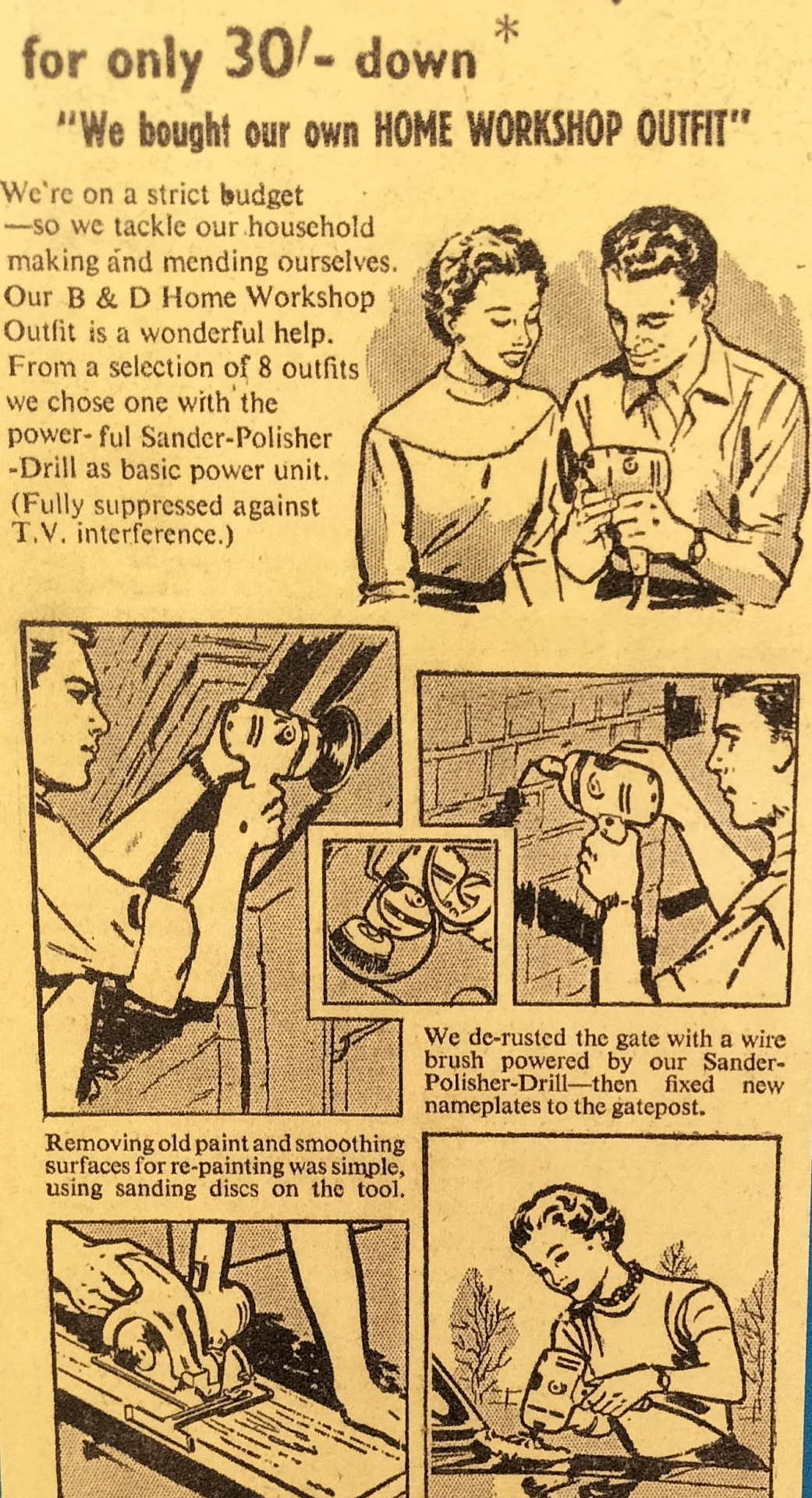
Every product represents the hope for ‘a dramatic shortcut to the long-awaited promised land of total consumption’. But the fulfilment of this promise is possible only with the attainment of the totality of commodities, a desire which excites the accumulation of commodities but which is ultimately insatiable. ‘The satisfaction that the commodity in its abundance can no longer supply by virtue of its use value is now sought in the acknowledgement of its value qua commodity’. Commodities circulate as ends in themselves; goods which are presented as unique ultimate products, the very best and latest goods, are replaced and forgotten the next. (Sadie Plant, The Most Radical Gesture: The Situationist International in a Postmodern Age, - Guy Debord Society of the Spectacle cited in ‘’)

Man Gifts, Black and Decker advertisement, circa 1950s
But as we have seen above, within radical SI influenced culture (macho punk V effete punk) there, by anti-spectacle logic, exists a circular self-critical ongoing examination of the holes and misunderstandings in its own theoretical position. (The society of the spectacle is wholesale, totalitarian, and therefore subjectively inescapable) Vaneigem – the Mai ’68 philosopher (overshadowed by distinctive Debord (philosopher as commodity)) - might contra Debord - controversially shout out: "THREE CHEEERS FOR COMMODIITES—HIP-HIP-HOORAY”. Writing in 1967 -- contra inter alia the malign product fetishism the continental radicals sensed pervading everyday post-war life -- Vaneigem declared for a need, not to refuse manufactured goods, but to subvert modernity’s electrical and technological commodities for creative ends. Predicting, pre-empting, prescribing, ‘producing’ what we today call ‘hacking’, a creative German engineer he told of, ‘Using makeshift equipment and negligible funds’, had created a DIY apparatus able to replace a Cyclotron; a homemade particle accelerator using magnets and high voltage electrodes. (The Revolution of Everyday Life). Blenkoe and his subjugated reborn modern-man jigsaw can be retrospectively reviewed from this Vaneigem(ist) perspective.
Clash of Worlds:

Bauhaus, “Arty” Book, Cover Detail,
If an ELU electric jigsaw, like a Seditionaries shirt, the glossy art book on Bauhaus Adam Blenkoe left out for his constructivist felt workshop, a Clash LP, Gibson Brogues, are distinctive BRANDED commodities so are Universities, art galleries, football grounds, shops, night clubs. Museums couldn’t escape the critical mind of the SI, any more than the power tool did. These carefully curated places can be – and are – today consumed as any cultural commodity. Modern subjects consume passively the museum as brand, looking over the fixed and revered inanimate objects. In consuming these residual respected cultures, we are looking to exhibit a spectacle of intellectual social distinction. The SI were getting at the exhibitionistic posing inherent in spectacular intellectual-consecrated consumption. ‘Who do we think is watching us when we consume culture?’ to paraphrase Jean Paul Sartre. (In his 2018 book Fewer Better Things Glenn Adamson – former director of the Museum of Arts and Design New York ‘one of the main things people look at in exhibitions is one another’.
Peter Wollen, in a very precis reprise of the compendium of ideas which situationism is constructed from writes that, despite their provocative journalism and philosophical gesturing, the Situationists’ wilder projects for détournement never took off. But they did want to change the cultural landscape and they are still well known for their urban fantasies and desire to alter the city. Arguing that ‘the Paris Metro should be running all night, special aerial runways should be constructed to facilitate journeys across the rooftops, churches should be turned into children’s playgrounds (or Chambers of Horror), railway stations should be left exactly as they are—except that all timetables and travel information should be removed from them. Graveyards should be abolished. Prisons should be opened. Street-names should be changed’ and anti-museums set up; art galleries should be raided i.e. hacked: ‘All museums should be closed and the art works distributed, to be hung in bars and Arab cafés’.
Jean Baudrillard in Revenge of the Crystal; Selected Writings on the Modern Object and its Destiny: 1968-1983 suggests that after functional objects, objects he calls ‘by-gone objects’ have been superseded or become obsolete in commodified society, i.e. non-functional, they nevertheless stick around the social and cultural scene and inter alia re-function as ‘rare, quaint, folkloric, exotic or antique objects. They seem inconsistent with the calculus of functional demands in conforming to a different order of longing: testimony, remembrance, nostalgia, escapism’. Baudrillard theorist of the simulacra goes on ‘One might be tempted to see them as relics of the traditional and symbolic order. Yet for all their difference, these objects also form part of modernity, and this is the source of their double meaning’[13] to the philosopher of commodity-objects-as signs list we might add ‘industrial’. For writing in 1968 amidst the heat of the Mai’68 anti-commodity fire Baudrillard and his cohort were still living in the epoch of production, manufacturing and thus industrial society. In our post-industrial setting the objects and functional tools of industry thus evoke as live signs of by-gone dead objects the secondary denotations and connotations he identifies in religious, ethnic, hereditary objects. Industrial-alia is chic and now belongs to that different order of longing: testimony, remembrance, nostalgia, escapism.
The industrially-derived objects on display as museum ‘collections’- housed in the open-displays of Museum of Making – are not left to do the work of this secondary order: creating/facilitating passive nostalgic longing in its spectating visitors. The world’s first factory is the Silk Mill in Derby which as the Museum of Making unlike many heritage places (and definitely other passive engagement museums –physically speaking anyway) has an authentic working workshop space where things can be actively made inspired by and associated with the industrial artefacts and objects on show. For example, my making course Kitchenalia used selected relevant industrial objects from the collections – carved patterns, aero-dynamic wooden models, presentation bowls and hand-made spoke gouges – as a starting point for this woodworking course. Although participants made serving platters, utensils and bowls, they explored the same skills and techniques used to make the objects picked out from the collections. In this way they were actively engaging with the process of making the by-gone functional objects and refuting their consignment to the realms of that secondary order of non-functionalism. Plus, in making artefacts they are acting under Westwood’s punkish radical imperative to make their own functional objects – not buy them from the internet or expensive commercial cookery shops. Consumption is therefore purposefully clashed with authentic production, commercialism confronted with DIY. The workshops are at the living centre of the museums’ making ethos and inform a certain development of a city ‘Making Quarter’. As part of the MoM project we have already created a mobile workshop ‘The Makory’ which we take out across the city - loaded up with tools and museum collections – into unorthodox spaces like laybys, country parks and inner-city concrete carparks reclaiming creativity and making – moving the museum in a converted – hacked - library bus.
[13] J. Baudrillard, Revenge of the Crystal, p35
Punk Making:
Punk was infamously founded (found out) on a radical DIY ethic. The low-fi influential fanzine Sniffin’ Glue drove forward this do-it-yourself ethic of anti-consumption – a well-told critique of complicated commercial pop and elite ‘progressive’ music – by printing in one of its most renowned editions a diagram showing three guitar chords. The gesture was a call to self-production, the guitar its means of original production. Showing finger positions required to make A, E, G chords it challenged the passive consumer-of-other-people’s-songs to stop passive consumption fandom and demanded “NOW FORM A BAND”.

Sniffin Glue, Fanzine, 1976
Over the last thirty years I have led many studio-courses and summer-school introductions to furniture making; most recently in courses prototyping #2 development phase of Museum of Making programming and a post-opening two craft course called Kitchenalia and Plywood Furniture where attendees made their own handmade chopping boards bowls and utensils, cabinets, bookcases, shelving units. After explaining to students what they can do with a simple raw skill saw and rail, biscuit jointer, and router, I refer to the Sniffin’ Glue provocation. I say, plagiarising Sniffin’ Glue, in order to provoke as the fanzine wanted to, ‘here’s a saw, here’s a router, here’s a biscuit jointer -- now you go make your own furniture’.
Power tools – hand-held machines – are not independently spectacular commodities, but inevitably gain their social distinction – semiotic worth – from their purchase price; good kit is expensive. But community craft centres like ORW, where I worked for ten years in London, and the 2021 Museum of Making inner-city workshop, are built on the premise of the DIY ethic. Not self-consciously anarchist or punk, yet subconsciously culturally determined by the autonomous punk ethos – all small community fabrication studios enable independent making by holding-in-common the tools needed for DIY furniture production: a saw, a router, a biscuit jointer (21st century it is a domino jointer). Given that amateur makers and post-grad students can’t afford to set up workshops and buy expensive equipment seminal to the manufacture of aesthetic and utilitarian artefacts, (you need more than scissors or razor blade) the community workshop hold these means of production as joint stock which can be commandeered with membership fees, small rents, and short-term public hire. Skilled help and technical advice the essential complimentary resource.
In a ‘sniffing glue’ punk-making mind-set I try to disenchant the ‘mystery of making’ (without undermining its skilled aspect) as fast as possible by associating independent making with the three-chord-mentality. The rawness of three-chord making can, I often want to point out, be reduced to two items of kit (planer and saw) or one chord production with a modern accurate circular or hand-held rail saw. In a workshop with a single robust circular saw, stripped back of guards and riving knives (illegally) I can rip, crosscut, groove, rebate, tongue, tenon and mortice furniture components to a professional standard. Most south-of-England antique restorers and cabinet-making workshops - secreted in hard-to -find anonymous marginal buildings - work a central table saw hard in this anarchist making fashion - stereotypically an old Wadkin cast-iron like the one we had at the Silk Mill circa 2013. I know because I’ve been in these raw brute foundational workshops and made complex beautiful stylish furniture in them. They exist all over the country if you can or want to find them and design/make your own stuff.
More than this, community ownership of machines and tooling and spaces of production advance punk’s anti-consumption theory and praxis because in buying one communal router, one shard biscuit jointer, one accessible saw they remove the temptation, or unavoidable need, for would-be makers to outlay hard-earned wages, bare subsistence incomes and allowances on commercial woodworking products they only need to use intermittently to create made objects. The sheds of England are full of unused and unwanted power tools. Bought from DIY retail outlets or specialist craft suppliers, these expensive goods lie idle. The rhetoric of the community workshop is clear to hear.
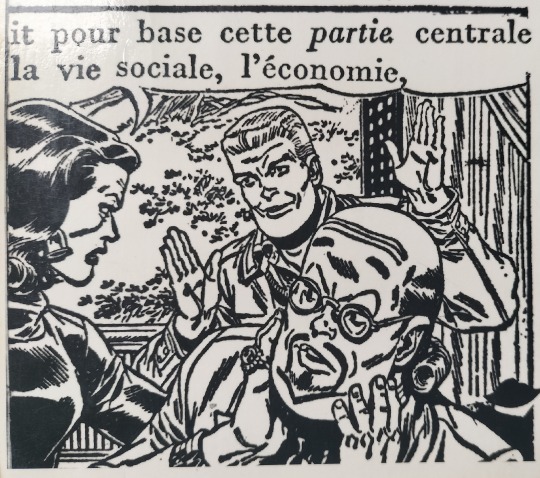
Banally, the sign/word ‘Hack’ abuts the word ‘Hacienda’. Spanish for a ranch, or large estate, or the house or building on these, Hacienda derives – and the dictionary tells me this - from the Latin root faceienda : things to be done, from facere : to do. Andy Warhol had the art Factory in New York, Factory Records was a Manchester urban record label, the Hacienda its independent night club. Tony Wilson of Factory Records plagiarised the SI - as is the rebel logic of the circular political SI idiom – and christened the Manchester night club The Hacienda after Chtcheglov’s hackneyed and well-hacked essay ‘Formulary for a New City’: ‘the hacienda must be built’. He argued for cities modified, detourned, hacked and the creation of a bizarre quarter, a happy quarter, a sinister quarter. And advocated mobile houses and transformable liquid strange experimental city environments. [14]
[14Sadie Plant, The Most Radical Gesture: The Situationist International in a Postmodern Age, Routledge, 1992, p. 61.

The Makory, Hacked ex-council Library Bus, Museum of Making, 2019
Going Nowhere, Detourned magazine image, Mai ’68 DIY screen print poster, ink on paper 1968
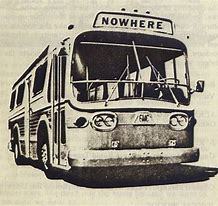
What might you get when you recombine a library bus with a workshop or a traditional museum with a live-making in-house workshop or put a museum collection in that workshop or put a museum in a factory and make that museum a factory to rebuild a museum? What happens when you clash active blue collar making low (non-official) culture of the factory/workshop with the high (official) culture of passive contemplative museum musing?
See detournement
The two fundamental laws of detournement are the loss of importance of each detourned autonomous element – which may go so far as to lose its original sense completely – and at the same time the organisation of another meaningful ensemble that confers on each element its new scope and effect.
Plywood - a DIY furniture making course - ran by Steve Smith - is a popular event at Museum of Making. This Autumn he is planning a furniture-making course exploring the cult Italian mid-80s designer furniture movement Memphis Style.
The Museum of Making workshop and studio programme is now running workshops on making ceramics, metalworking, tin-smithing, woodwork, weaving, clothes making.
Adam Blenkoe has recently finished a commission for the Barbican and is in discussion with Museum of Making workshop ‘bringin’ back’ his ‘felting machine’ to the city for 2022.
Steve Smith has completed a clothes-making course ran by fashion designer and tailor Abi Wastie. Abi is a course leader at Museum of Making.
DIY is a new exhibition for 2022 at the Museum of Making
Director of Projects, Hannah Fox, is a former student of Belper High school and led the way advocating the installation/juxtaposition of a live making workshop within a museum setting at Derby’s Museum of Making. She is leaving the project to join the Bowes Museum Barnard Castle.
Steve Smith, Workshop - Studio Supervisor, May, 2022
0 notes
Video
youtube
See behind the ethos of co-production behind the making of the Museum of Making.
3 notes
·
View notes
Video
youtube
Find out about the unique model railway at the Museum of Making, and the volunteers making it!
0 notes
Video
youtube
Watch a short film about Making the Museum of Making
0 notes
Text
We opened the Museum of Making!
In May 2021 the Museum of Making opened to the public, after a decade-long project to develop the concept with our communities, seek investment, and make it real. The response to the new museum has been incredible, with lots of visitors coming through the doors, businesses and organisations using it as a venue, and even wedding celebrations onsite!
During a very challenging time as we continue to experience the COVID-19 pandemic, people are making the most of opportunities to meet up with family and friends for lunch in the River Kitchen, participate in a weekend activity, or learn how to make furniture in our workshops. It’s wonderful to see the museum being used by our communities and truly living up to be a museum of making!
The Museum of Making would not have been possible without the incredible contributions of our project partners and 1000+ volunteers who gave over 35,000 hours of time and skills to the project. The Museum of Making was generously funded by the National Lottery Heritage Fund, Arts Council England and D2N2 Local Enterprise Partnership. Significant support has also been received from Derby City Council, Rolls-Royce and a range of charitable trusts and foundations.
This tumblr blog serves as a record of all the incredible effort people have put into making the Museum of Making. Thank you to all who have supported the project over the years - we couldn’t have done it without you.
0 notes
Text
Nearly ready to open!
Almost 10 years to the month since the project started, it’s less than two weeks until we can open the doors of the new Museum of Making and welcome you in! The past 4 months have been a whirlwind, with the final elements coming together supported by our amazing volunteers and project partners.
The Alliance team signed the handover document for the building via a virtual signing party, it proved to be quite an emotional moment.

Galleries have been completed, shops are ready, the cafe menu has been tested... Check out the installation of the Bakewell Gates in this short timelapse. These are the original gates of the 18th century silk mill, made by the famous ironsmith Robert Bakewell, who had a forge in Oakes' Yard in St Peter's Street.
youtube
The coming days will see lots of final object placements, cleaning galleries, and checking systems. We’ve recruited a fantastic Visitor Experience team, who are all very excited to be starting work next week and can’t wait to welcome you soon. Entry to the Museum of Making is free but, due to current Covid restrictions, visitors need to pre-book timed tickets for general admission. Special exhibitions are charged and we encourage you to buy these in advance. You can book your tickets here
https://www.derbymuseums.org/museum-of-making-bookings-open/
Thanks to everyone who has been cheering this project on, or has been part of making the Museum of Making. If you’re a national lottery player, your ticket purchase funds projects like this and we thank you for your support.
Looking forward to seeing you soon!
0 notes
Text
Thank you (we’re nearly there...)
As the year draws to a close, the project team wanted to share the latest images from the Museum of Making (in the post before this) and our sincere thanks to all the people who have generously supported the project during the challenging year that has been 2020. Special thanks go to:
Our amazing co-production volunteers who have stuck with us, generously giving their time and skills and keeping our spirits up through the tough moments... Putting the US in mUSeum.
The Alliance team members who have kept the capital project heading in the right direction and have worked incredibly hard to navigate challenge after challenge. These companies are: Bauman Lyons, Creative Core, Derry Building Services, GCA (UK) Ltd., IPInitiatives, Preston Barber, and Speller Metcalfe Ltd. We are so grateful to be working with you all!
Sue Ball, from MAAP, who has produced the incredible Arts and Heritage programme, supporting artists to make new work and involving volunteers throughout. Thank you Sue!!
The capital project supply chain - all the sub-contractors and suppliers who have navigated lockdowns, capacity and material shortages to help us keep the project on track. The list is huge.
The artists and their supporters producing incredible new work for the museum and have dealt with everything this project has thrown their way - Andrew Martyn-Sugars, Andy Taylor-Smith, Red Saunders, Toni Buckby.
Stakeholders and partners - including Derby City Council, Derwent Valley Mills World Heritage Site, Marketing Derby, Midland Railway Society, Rolls-Royce Plc, and the wonderful arts and cultural organisations in Derby and Derbyshire who are part of the 300 programme.
Our funders - National Lottery Heritage Fund, Derby City Council, Arts Council England, D2N2 & Midlands Engine, Trusts & Foundations, and all the people who have supported the Make Your Mark scheme.
All the people cheering this project on - whether that be in years past or today, your support and advocacy makes all the difference!
Last but not least... our colleagues at Derby Museums who have kept this project going in the most difficult of years and have put their creativity, knowledge, skills and energy to every aspect of making the Museum of Making. You are all amazing.
Thank you all.

0 notes
Photo

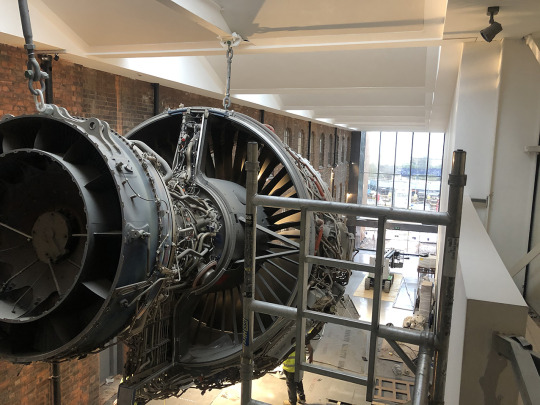
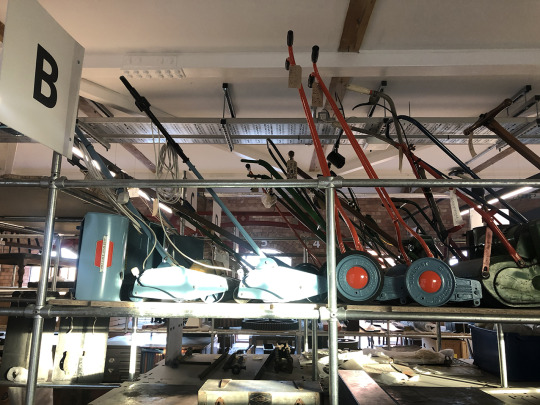







The Museum of Making is looking beautiful as we near the end of the capital project.
0 notes
Text
October Project Update
Well this certainly hasn’t been the 2020 we were anticipating! You may know already that the lockdown and need to ensure safe working conditions onsite necessitated a temporary close of the Museum of Making site in March. By introducing COVID-safe conditions onsite and working in collaboration with suppliers and funders, the project team managed to restart onsite in May. Since then the restrictions and the availability of labour and materials has meant steady progress, albeit slower than normal. The alliance team and partners have been working extremely hard to coordinate all the elements needed to complete the museum in these challenging circumstances.
The spaces are coming together: staircases and lifts are installed; doors are being hung; decorating is being finished; rooms are being cleaned ready to receive objects back to the building.
The workshop reopened in August and volunteers have been working with Steve and Andy to make the final elements for the fit-out of the exhibition and open-storage spaces.
The model-railway is coming on apace, with wonderful volunteers working on elements remotely from home.
The collections are being prepped in storage, ready to be brought back and placed in their final positions. Coproduction volunteers are
The opening that had been planned for September has been moved into Spring 2022 and we have everything crossed for the next 6 months. There is still a lot to do, and doubtless some challenges still to navigate – but we are so grateful for the continuing support from all our wonderful collaborators as we make the Museum of Making.
We wanted to share some photos of progress from the last three months. See the album following this post. More will follow soon.
0 notes
Text
Decant - Recant
Over the coming weeks objects will be returned to the refurbished Silk Mill Museum of Making Derby. It is opening in 2021. Objects have been in storage units since wholesale museum decant in 2018. Many of the objects - propeller blades, models of pit pony carts, miniature Rolls Royce cars and jet planes, foundry patterns, cast iron clock dials - were put in plywood crates - wood boxes made in the workshop on a CNC router. The cases were machined, assembled, and crucially designed, by a small team of volunteers. lead volunteer was Steve Lockley, retired nuclear engineer, mathematician, chorister, woodworker, artist, blogger. Below is a blog post, lost but now found - stored up - recording the crating process.
Steve Smith workshop Supervisor Museum of Making, Derby
Crate Expectations
Introduction
Background to why we are going to this vast expenditure of time and trouble (albeit free) to crate up the museum artefacts...
Design requirements
Crates must be
· Robust
· Cheap
· Easy to prepare
· Easy to assemble
· Have no adverse effects on the contents
· Minimise volume – so each crate is customised to its contents
Design choice
The classical design of crate features a softwood carcass with thin plywood panels, as can be seen in the picture to the right (the sample was kindly provided by Andy Miller).
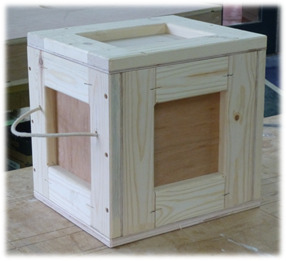
However, we have little experience of this type of design, and preferred instead to use a scaled-up moulding box construction, as shown below. This uses simple rectangular panels of 18mm ply, with housings routed into the top, bottom and sides to ease assembly and add rigidity. All the pieces are easy to cut out, either on the saw table or, preferably, on the NC router.
We did a price comparison of the two designs, and found that with an economic ply of reasonable quality, the cost was quite competitive with the softwood carcass in the ‘classical’ design.
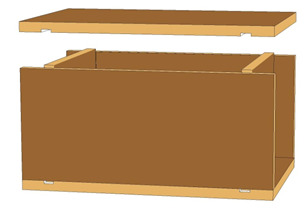
The length, width and height of the crate internals are basically the dimensions of the contents plus an allowance for packing – a delicate object needs a fair amount of wrapping, so we would allow 25mm (1 inch) all round, whereas something sturdy might only need 5mm (~ ¼ inch).
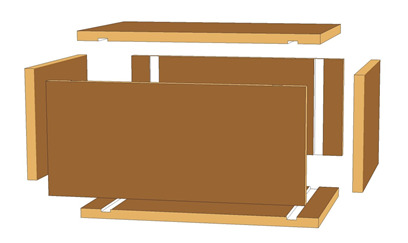
Here we see the individual parts that go to make up a crate: two sides, two ends and an identical top and bottom. When these are assembled, by screwing them together, we end up with a crate as shown below.
You’ll notice some additional features on the finished article. There are two elliptical hand-holes in the side, together with a couple of ‘mouse-holes’ on the lower edge. The latter were included following concerns that the ply might give off gases (from the adhesive used in manufacture) that could affect the article inside. In addition, there is an identification number routed into the end panel, to help identify the article contained in the crate.
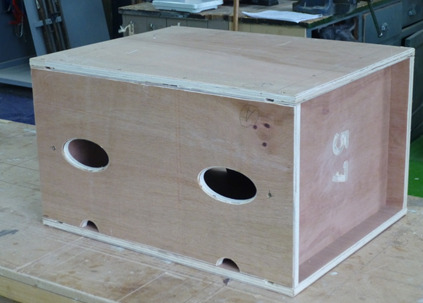
After some trial and error (mostly error), we found that we could automate the process by which we produced a crate for any given article. This involved a number of steps using computer programs and input from the designer, basically as follows –
1. Measure the article to get its length, width and height.
2. Enter these dimensions, together with things like identification number, into an Excel spreadsheet.
3. The spreadsheet would calculate the dimensions of the components of the crate, and produce the contents of a file for input into Inkscape, a computer drawing package.
4. Using Inkscape, the basic crate components can be developed if necessary (to get more handholes for example, or to duplicate or reposition the components as desired)
5. The output from Inkscape is then fed into Vcarve, where the designer sets up the actual cutting instruction set for the NC router.
6. The crate components are then cut out, finished and assembled.
Looking at the process in a bit more detail –
Having measured the article, we create a folder on the computer for that article and copy in the Excel spreadsheet. The name of the article, the dimensions and identifier are entered as shown below. (The other parameters in cells C9 to C16 don’t tend to vary from job to job.)

The spreadsheet then calculates the dimensions of the crate components in cells A20 and B20 (for the sides – the other components are included but not shown here).

The default measurements used in Inkscape are ninetieths of an inch (!). This apparently is a common scale used for printers, which is the main application for Inkscape. Whatever, the spreadsheet applies the scaling to the dimensions in millimetres to get the Inkscape equivalents, as shown above.
These Inkscape measurements are then automatically embedded in cells in the next worksheet in the spreadsheet, as we see in the following illustration. This sheet, denoted ‘text’, is basically an Inkscape input.
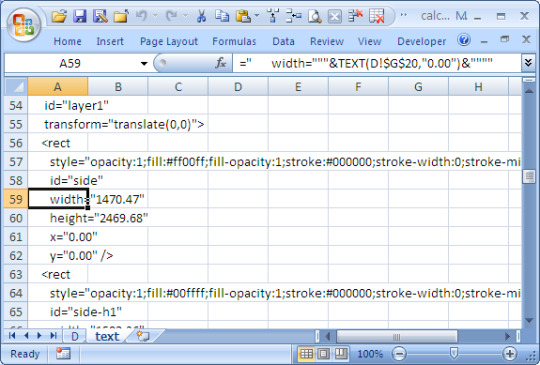
To get the data into Inkscape, I found the easiest way (for me) was to create a text file (here called ’41.txt’, select the first column in the spreadsheet, and copy and paste into the text file. I then change the file extension from .txt to .svg (scalable vector graphic). Double-clicking on this file the opens it up in Inkscape, as we show on the next page.
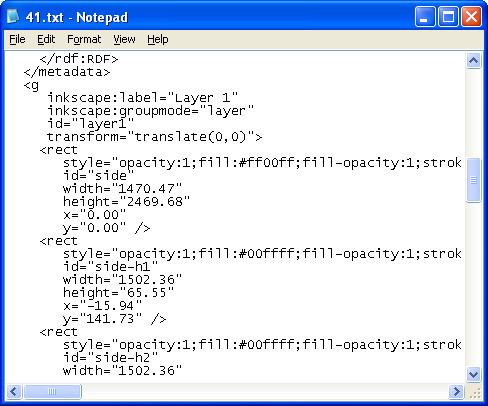
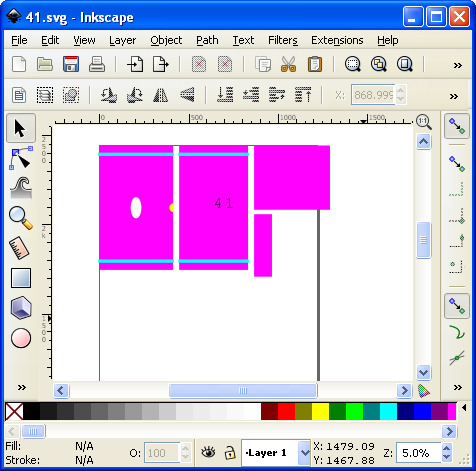
I then save this file as a PDF (Vcarve won’t accept SVG files, unfortunately).

The next step is to open up Vcarve and import the PDF. We can then duplicate and rearrange the component and make whatever adjustments are required. Components from other crates can be added to the sheet to cut down on waste. (This means a lot to some people, who spend a lot of effort filling up every last corner...)
Once the sheet is laid out, the cutting path instructions for the NC router can be set up and saved to file, but I don’t propose to deal with that here.
Lastly, the file containing these instructions is copied to a USD stick, which is inserted in the router console and the actual cutting out performed at last.
It all sounds a bit tedious, but once you’ve done it few times, it all becomes straightforward. Honest.
0 notes
Text
Postscript - Hegel’s Trowel: Recovery Story
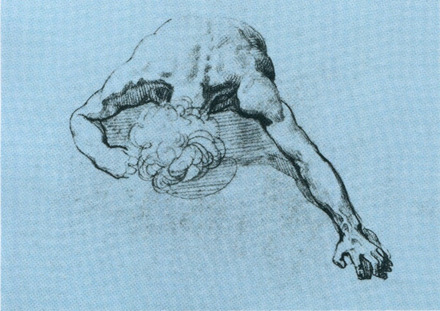
Elaine Scarry in The Body in Pain: The Making and Unmaking of the World writes about how tools and manufactured objects are extensions of the body into the world and thus ways of knowing it. The book identifies the ‘presence of the human body in the artefact’, and by homology the remaking of the human body into a concomitant made object/artefact. Making and constructive working, then, are crucial elements within any engagement of the body and the mind with the world, and of knowing the world through the body and the body through the world. That is to say, she supports Hegel’s doctrine of the self-creating power of work and making.
Scarry writes of how, unlike political torture and violent war - which are investigated in the first half of her text as extreme examples of hyper-negative un-making – transformative therapeutic positive making is involved in the re-making of the world, and as such, the reworking of pain, and in this making human subjects relieve the sufferings of contemporary and historical oppression and conflict. Published in 1985, The Body in Pain might also be useful in discussing the micro tortuousness and conflict found in the everyday world and how simple acts of making and creating can transform these pains. Covid 19 has brought non-conflict societies closer to the extreme world of unmaking in which the body is under complete attack. In which case everyday making will become, when we can return to making, a material and symbolic tool in our rehabilitation. Rescuing, repairing, restoring creativity and constructive activity to their proper path. Paradoxically, The Body in Pain argues the vocabulary of “creating,” “inventing,” “making,” is not, in the 20C, for some illogical ideological reason a morally resonant one. More than this, “material making” is ‘ethically neutral’ or conceived as an ‘amoral phenomenon’. But, she continues, ‘an unspoken question begins to arise’:
‘Given that the deconstruction of creation is present in the structure of one event which is widely recognised as being as close to being an absolute of immorality (torture), and given that the deconstruction of creation is again present in the structure of a second event regarded as morally problematic by everyone and as radically immoral by some (war), is it not peculiar that the very thing being deconstructed -- creation – does not in its intact form have a moral claim on us that is as high as the others’ is low, that the action of creating is not, for example, held to be bound up with justice in the way those other events are bound up with injustice, that it (the mental, verbal, or material process of making the world) is not held to be centrally entailed in the elimination of pain as the unmaking of the world is held to be entailed in pain’s infliction? The morality of creating, of course, can be inferred from the immorality of uncreating […] That we ordinarily perceive it as empty of ethical content is itself a signal to us of how faulty and fragmentary our understanding of creation is.’
The Silk Mill workshop has now returned to making the Museum of Making museum. Post-covid-19 lockdown.
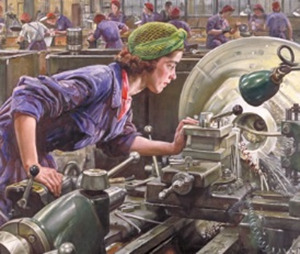
Ruby Loftus Screwing a Breech Ring, 1943, Laura Knight - Credit Imperial War Museum
Steve Smith Workshop Supervisor, Museum of Making
2 notes
·
View notes
Text
HEGEL’S TROWEL: working on the thing
Making changes everything. Ivan Illich, Tools for Conviviality
Soul is extra-scientific, outside of science, we will allow no scientific disproof of it. Maulana Karenga, Practice: Documents of Contemporary Art
Locked down by government guidelines designed to increase social distancing, the gap between oneself and the other, a space that can stop cross infection between us all, meant spending time watching the television. The daily BBC update reported how many more bodies have been, are still being, destroyed or attacked from the deadly Covid-19 virus. It might not be surprising then with so much biological and existential demolition on the go that I found myself watching TV programming to do with restoration and making things: Salvage Hunters, Escape to the Chateau DIY, Secrets of the Museum, The Restoration of Notre- Dame Cathedral. Kirsty Alsop reckons these days we should Keep Crafting and Carry on; making things as a form of therapy. The Repair Shop is a phenomena with craft experts restoring material stuff to how it was. Grayson Perry promoted art, and artisan making – he is a potter - as a great healer: ‘we are all wounded’ he said on channel four. Before the outbreak of this new threat to life I was working up this small general piece about the transformational potential of creative activity, in the main, making.
Lisa Tarbuck, was talking on radio 2. She’s a media celebrity and a fan of making things. Super mentioning a piece of weaving or needlework she’d completed that day, she told her Saturday night audience: ‘I just couldn’t stop bloomin’ looking at it…know wot I mean…? An old friend told me recently that I just had to get hold of a copy of Mathew Crawford’s The Case for Working with Your Hands (2011). He, the old friend, was the studio furniture designer-maker when I worked with him at Detail London; a young furniture makers. Together, we made bespoke furniture (for a beautiful stylish wealthy cool consuming clientele). Nowadays he works in academia, writing and lecturing to students about craft and making. His research has interrogated how human well-being is affected by undertaking craft activities, particular recreational making done by amateur practitioners. Crawford writes about well-being, too. The subtitle of his study is: or why office work is bad for us and fixing things feels good. In a recent email exchange the furniture designer turned academic communicated that he looked back with fondness to his making days. Perhaps with ‘rose-tinted glasses’ he qualified.
There is a growing group of western intellectuals who today theorise and promote the idea that there is a definite connection between the processes undertaken when crafting things from raw materials and human well-being. Often slow and protracted, acts of physical making are, they generally posit, a valid source and resource to increase self-esteem. Existential events such as technically planning how to make something from scratch, the selecting of appropriate materials, development and deployment of hand skills, constructing structures to a set standard, finishing worked-on material, just being in a practical workshop in extended time and space, are inter alia physically, intellectually, emotionally good for human life. Teaching craft skills in adult education and community workshop settings I have witnessed diverse learner makers achieve remarkable personal satisfaction, and that allied well-being a craft cognoscenti rightly identify, in going through the technical and material processes when constructing any crafted object. Contra this supra ideal of process, quotidian workshop life reveals that, in reality, it is not only the extended making of the final object that is beneficent to the maker of this newly-present thing – the temporal spatial physical crafting and grafting - but the now-made self-styled object- the present thing in itself the maker has made.
At the currently closed-for-restoration Silk Mill (soon to be transformed/remade as The Museum of Making) interested visitors come to Derby for a look around the modern workshop housed in the ‘world’s-first-factory’. Generally, but not always, these people are museum professionals, culture workers, creative artists or social activists. Nearly all are interested in delivering well-being because it matters. I like talking to these folks, often desk-bound and definitively (unavoidably?) over-digitalised in their daily office lives, they take a genuine interest in the practical making a workshop allows – the working we do with our hands - activities they see as critical to human holistic well-being. Sometime ago our executive director at Derby Museums was in the workshop standing by our CNC, talking with me. Next to Tony stood one of the inquisitive visitors; an interested (and interesting to me) culture-industry professional. Inevitably, the conversation made its way to mentions of well-being. I told them both how I see people who often do symbolically distinguished, but atomised or abstract, work -- practices with often unquantifiable or subjective outcomes (the negative work Crawford describes) -- come to a fresh and solider understanding of themselves after constructing a materially tangible piece of furniture out of plywood or turning out a curvy bowl from a rough brute blank of oak. Stood next to the idled CNC I remember saying something like this:
“In my working life I come across a lot of people who do highly complex engineering, but in a rather abstract or theoretical way, or others who live in a digital bubble I call ‘computer world’, modelling AutoCAD perfection but never getting to actually see or touch any material outcomes or be involved in making something from start to finish by their own hands… But when people make something here in the workshop they objectify themselves…….as they say “no one has ever taken a picture of the unconscious…or seen a picture of the self ”.
There followed a sort of embarrassed silence. Then inscrutable nods and smiles from the Executive Director and his guest. Then a “well thanks for that Steve….” -- as they left the workshop.
Specifically, a proud plagiarist, I had, of course, synthesized the ideas of literary critic Terry Eagleton and Arts and Craft sculptor Eric Gill. Generally speaking, I had just paraphrased a few ideas of the well-known German philosopher GWF Hegel (1770-1831) -- ideas lifted from the undecipherable, but well known, Phenomenology of Mind (1807).

Well, to be more honest, I was paraphrasing Alexandre Kojève’s partially more decipherable Introduction to the Reading of Hegel. Compiled from Kojève’s lecture notes, and first published in 1969, the cult text explains Hegel’s theory of the dialectical (constant changing) progress of human history, in particular his well-known concept of the ‘Master and Slave’ conflict – the transformative phylogenetic and ontogenetic dialectic. For me the key passage in Introduction is how the text unmakes and then reconstitutes Hegel’s brutal concept of The Thing – raw given objective nature as unshaped material object – and how non-human Things (slaves/workers/makers) become Human. i.e. transform their selfhood from a raw physiological primordial brute unthinking thing by working on another thing (raw brute unshaped material reality – wood, stone, metal, wool, cotton, clay) and making it or, a key word, transforming it (as of themselves) - into something it wasn’t before, in its un-worked material given existence in the world, for another: The Master.

This is the actual Hegelian (Kojèvian) paragraph that refers to the experience of the creating maker- slave who makes for, and in place of, the consumer master:
‘The slave can work for the Master – that is, for another other than himself…he does not destroy the thing as it is given. He postpones the destruction of the thing by first trans-forming it through work; he prepares it for consumption-that is to say, he “forms” it. In his work, he trans-forms things and trans-forms himself at the same time: he forms things and the World by transforming himself, by educating himself; and he educates himself, he forms himself, by transforming things and the World. Thus, the negative-or-negating relation to the object becomes a form of this object and gains permanence, precisely because, for the worker, the object has autonomy. At the same time, the negative-or-negating middle-term—i.e., the forming activity [of work] – is the isolated particularity or the pure Being-for-itself of the Consciousness. And this Being-for-itself, through work, now passes into what is outside of the Consciousness, into the element of permanence. The working Consciousness thereby attains a contemplation of autonomous given-being such that it contemplates itself in it. [The product of work is the worker’s production. It is the realisation of his project, of his idea; hence, it is he that is realised in and by this product, and consequently he contemplates himself when he contemplates it. Now, this artificial product is at the same time just as “autonomous,” just as objective, just as independent of man, as is the natural thing. Therefore, it is by work, and only by work, that man realises himself objectively as man. Only after producing an artificial object is man himself really and objectively more than and different from a natural being; and only in this real and objective product does he become truly conscious of his subjective human reality. Therefore, it is only by work that man is a supernatural being that is conscious of its reality; by working, he is “incarnated” Spirit, he is historical “World”, he is “objectivised” History.’
Kojève concludes in the Intro that the dead German idealist philosopher (Hegel) ‘may well know much more than we do about things we need to know’.
Interestingly, a former US academic/intellectual, Crawford (he worked in a Washington ‘think tank’ before quitting to run a motorcycle repair shop) uses the same quote in his book The Case For Working With Your Hands – but misleadingly attributes the quote to the Kojève. Folksy Crawford expresses Hegel’s idea in a more homespun pragmatic manner, as is the way of practical American philosophy: ‘The satisfaction of manifesting oneself concretely in the world through manual competence has been known to make a man quiet and easy…he is proud of what has been made’
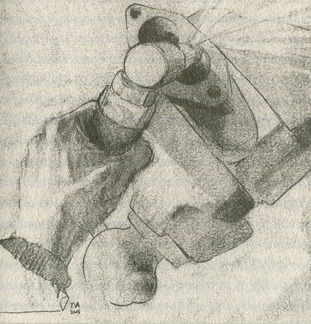
Crawford writes about a kind of ‘self-disclosing’ latent in creativity, work and making.Concurring with Crawford and Hegel the sociologist Richard Sennet in his study The Craftsman, rites about ‘the warm values of craft and creativity’ and a ‘zesty freedom crucial to well-being of society’.
_____________________________________
I worked for a time in a comprehensive school. The head of Design and Technology – a former skilled industrial toolmaker – had had the foresight not to sell off the capstan lathes, milling machines, welding kit, old-school woodwork benches and traditional hand tools bought and installed in the 1970s.
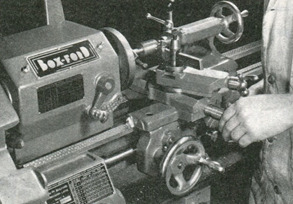
Painted out in dull lemon yellow, orthodox (vintage) wood-machinery apple green, the Design &Technology workshops looked like the past and so still played their part in 21st century life. You could smell old machine oil in the cold metal machines, bashed-up blue vices fitted to weathered beech workstations exuded a residual making aura. When the lathes were set running, rasping files shaped steel, sharp planes flattened pine, the space sounded like a real live workshop in the (ontogenetic) now, yet echoing the making culture of a phylogenetic past. In America, Crawford tells us that technical making and design is simply called ‘shop class’, or more accurately was called shop class because he bleakly observes, akin to the collapse of technical skills education in Britain, since the early 90s educational institutions have instituted a ‘big push’ to close shop class to open up digital and computer literacy. Any revival of shop class today is hindered for Crawford by the lack of skilled people competent to revive technical crafts and making in general.
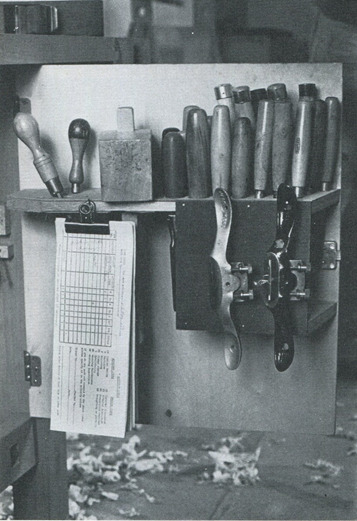
Frustrated by the British school drift to digital D&T practices, a virtual curriculum (there is now virtual welding), and driven on by a shared ‘it wasn’t all computers in our day’ narcissistic nostalgia (manifested in everyday miserableness), me and the old toolmaker got our heads together and came up with project which harked back to the days of secondary-modern craft lessons in wood and metalwork; the saved machines made the scene believable.
It was only a small pot-planting trowel. It was made out of aluminium and wood. From tip to tip 200mm long. It had a curved blade and the cranked arm was cold-riveted to the blade in a traditional blacksmithing style; the students used ballpein hammers clanging metal on the workshop’s under-loved anvil. On the once-busy but no-longer-silent lathes we put a sharp point on the 6mm round bar that made the stem from handle to blade helping drive it into the softer wooden trowel handle. The serpentine bends were created on a small Groz metal folder designed for DIY artisan metalworkers. The hardwood handle was shaped with a selection of rough round and flat cutting rasps, before being sanded, with care, by glass-paper. The blade was formed with aero-industry tin snips before being worked into a symmetrical curve with metal files. To work the flat sheet aluminium into the required radius of the blade it was fed several passes through a small jewellery rolling machine – sort of a washing mangle meets pasta machine. The trowel looked impressive when made. Three hundred students made one. The test of success is always if young makers want to take what they make home to show to someone who they care cares; most did. They had worked on the thing, objectified themselves, could contemplate themselves in itself, the small trowel, a trowel designed to be used, a tool to work on the thing, transforming nature as soil to wit.

The now fired up ex-toolmaker pointed out to me that, before we could roll out the trowel project to the students, the NQTs (Newly Qualified Teachers) in the D&T department – the electronic, digital, laser engraving, 3D printing makers – and ESWs, (Educational Support Workers) who would assist students, had to be quickly trained up in the basic craft and hand skills required to create, then teach, the trowel. They would need teaching the basic historical making techniques for working on the thing.
We arranged an ‘after-school’ instruction session in the workshop classroom. Everyone arrived looking harassed with a mug of tea or coffee/mug of hot water; offered the usual banter; male teachers removed ties; everyone put on an apron. Each participant got a set of stock blanks: a length of aluminium bar, 150mm x 6mm ø; a rectangle of sheet aluminium, 1mm x 75mm x 120mm; a section of hardwood (beech, oak, ash, reclaimed teak or mahogany), 100mm x 25mm▫. The first task was to make a two-dimensional template – using 5mm graph card folded in half along a continuous grid line – to mark out the tapering and curved profile of the trowel’s blade. Sketching freehand they used the graph-paper squares for visual guidance. The pencilled line was cut with scissors and the pattern unfolded to reveal a symmetrical, if rough, outline. The next step was to show the trowel-makers how to transfer the profile, geometrically square, onto the shiny cropped aluminium by using a scribed (accurately-marked) centre line to align the centrefold of the paper along, thus ensuring the blade sat true, i.e. at 90° to the square back edge.
A metal scriber was then used to carefully score a visible line around the flimsy paper template into the soft aluminium. The workshop was quiet except for the soft ringing sound of metal on wood benchtop as, in deep concentration, teaching-staff students guided the hardened and sharpened steel marking tool around the curved card onto the aluminium.
(Still you could hear some light jokey banter, but of a kind, collaborative, encouraging type of joshing – ‘phatic’ communication, some dead continental philosopher of language would say.)
Aluminium can be cut easily - as card with scissors - when using inexpensive aero-industry shearing snips. Commonly used in hand tin-smith work and light commercial bespoke production these tools are designed to cut straight or with a left or right hand bias. (They are colour coded red, green and yellow and a good workshop needs the full set – an additional long-nosed straight-cutting pair is a great help for occasional extended profile cutting or internal corners.) I demonstrated how to cut the aluminium in short snips, neatly following the scribed line, shearing the material slowly and deftly the snips making the waste (swarf) curl upwards, away from the desired external blade line.
It was pointed out to the teacher-students that - novice maker or proficient craftsman - it is generally best practice when cutting stock materials to work ‘outside the line’ leaving a small margin of material for cleaning up post-cutting. Dead flat with fine teeth, hard because made from steel, metal-working files were used to remove the extraneous rough cut metal to the scribed line, scored into the aluminium, demarking the required final recognisable trowel-blade profile. Filing produces sharp burrs on metal which, in this instance, were removed with industrial emery paper. The blade smooth and symmetrical was now ready for the students to roll.
Metal rolling is the same process for a fine silver ring as a thick-walled boiler rolled out from, as it happens, 25 mm boiler plate. Basically, thin or thick factory-milled metal plate is passed through two calibrated parallel rollers which are adjusted to the required gauge of the material to be rolled. Sprung under high tension the front bars force the metal sheet towards a single back roller which is set higher than the underside of the passing steel or, in our case, aluminium. The metal is malleable and -- forced to climb over the higher spinning back roller -- begins to take on the required radius of the part required. This might be a shallow curve as the trowel needs, or a full circle, as in a delicate silver ring or a high pressure vessel such as a boiler whereby the seam is soldered or welded together and ground back. We were using a small jewellery-maker’s bench roller - no more than 300 mm in width - but the radius-forming mechanical principal remains the same.
Operating a bench metal roller is, as I sort of said before, a bit like passing dough through a pasta machine. But instead of making the metal thinner per pass – which, as is well known, is how the metal plate was produced in the forging mill in the first phase of ‘thing working’ - the radius is increased; the careful gradual adjustment – the increased un-alignment of the roller - in small increments forms the aluminium into the practical, and aesthetically pleasant crescent wanted. Students checked the curvature against a small accurate plywood template. They had to make three to four adjustments.
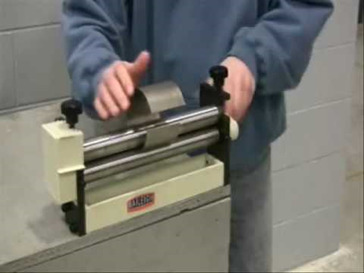
Before forming the 6mm bar into the distinctive kinked component joining the wooden handle to the blade of the trowel, it was necessary at this stage to turn a sharp point on the aluminium that would allow the bar to be driven into the end grain of the timber. The stock piece of rod was placed in a three-jaw chuck screwed onto the turning stock of one of the neglected Colchester lathes in the workshop, and the traverse tool slider bed set at 5°; a shallow machining angle, but correct for this operation. Each operative was informed of which was the correct tool to use for this operation – left hand cutting tool - and shown how to clamp and set the tool in the lathe tool holder to the dead-centre of the lathe and therefore the dead centre of the round stock material to achieve the optimum cutting angle and efficient waste removal. As a matter of maker education, head-stock turning-speed settings – coded in colour on the foundry-cast body of the Colchester – were demonstrated to, but set by, the learner turners.
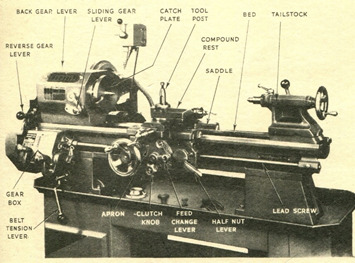
The trowel project was designed/contrived to include several processes and employ a variety of tools and typical metalworking kit to introduce youngsters to some fundamental craft techniques and experience bench fitting, sheet metal working, capstan turning.
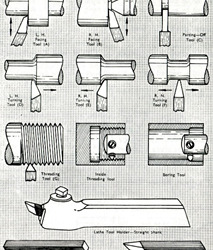
To secure the cranked arm to the blade two aluminium rivets were to be inserted through the stem and trowel blade and flattened into a pre-drilled countersunk hole so creating a secure fixing. But, the bar was round in section, so that only a small section of the stem would be in contact with the flattish blade. To achieve a better joint it was imperative, then, to flatten out the round bar by heating the end of the stem and bashing it while it was still plastic with heat, hammering it carefully into shape with a heavy ballpein hammer on the arm of a traditional forge anvil; a neat steer of the making process into the lost-world of blacksmithing.
(Hegel liked to walk in his home town of Heidelberg, and perhaps it was the sight of the town blacksmith toiling over a hot forge, hammering and twisting hot raw iron into shape, making some decorative gates for the local lordship, that inspired his ideas about masters and servants and the transformative effects of working on the thing? Today, most of us have seen similar images on TV: neo-blacksmiths heating metal in a forge until it glows orange-red with heat from the coals before working it to form, with that romantic ringing of hammer and anvil, before plunging the work into cold steaming water.)
The problem with aluminium is that, non-ferrous, it retains its silver-grey colour when heated, and, to boot, we didn’t have access to a traditional forge, but the old toolmaker had the answer. He produced a plumber’s Gaz blowtorch, “I nicked ‘im from construction cupboard”, and some Fairy Liquid. Go on then, he said, smirking, what’s the Washing-up liquid for? I put my bottom lip out, shrugged with a laugh, and said I had no idea. “Ally don’t glow”. “Oh…I see” I said. “Detergent turns black when metal’s ‘ot enuff…then you can work it on anvil…simple” he grabbed the collar of his white smock with both hands and gave them a tug, before firing up the blowtorch. I passed this tip on to the NQTs and ESWs before they flattened their trowel stems.
In old-school black and white ink, a technical drawing indicated to the trowel-makers where on the straight length of aluminium bar marks needed to be made to indicate where the handle section should be placed in the trapping tongue - moved by a simple rack gear - of the Groz bender. The top of the tooling was also marked ‘clock –face’ style to show how far the tommy bar handle should be moved (from 12 to 4 say) and so work the soft rod into the flattened S shaped crank required of the finished component. The makers were having fun using the different kit, especially, the Groz, - they became absorbed in the basic but fundamental metal-forming processes and traditional manufacturing techniques introduced to them - but had to fully concentrate on ensuring that the two bends were executed in the same plane of orientation to avoid twisting the stalk of the cranked trowel stem or out of line with the flattened riveted section.
[ The Groz metal bender is itself a thing – converted and worked and cast from material nature (mined raw iron ore -- made into steel and machine processed) - made by things – humanised thing makers (engineers) - to make small springs, fixing clips and rings - things for other things; tools, machine parts, which in their bending, twisting and forming offer a thing maker chance to transcend its objective thingness in working on this metal material stuff, and objectify its subjective self through the final thing made, which in the case of machinery and tools may make other things and so on. Such as clips on a motorcycle in for repair or customisation in Crawford’s American shop. ]

The cranked bar was then set in a machine vice on the pillar drill, and a 3mm hole was drilled to take the rivet stalk and slightly larger countersunk hole ( top side) into which the 3mm aluminium rivet stalk would, using a hammer and anvil, be flattened. The wider domed mushroom head of the round rivet traps the thin blade between the stem and blade. To avoid flattening the curvature of the rivet head a purpose-designed hollowed out steel tool -- an exact concaved inverse radius of the convex pip of the rivet fastening -- was used by the participants to protect it when hammering the soft aluminium into the bored out section on the reverse side. This was then also filed flat and finished smooth with emery paper. With this fine fettling the metal-working processes had been completed. Components had all been successfully marked out, cut, shaped, rolled and bent, riveted and finally filed into a recognisable small potting trowel. Everyone in the class (shop) looked dead pleased to have transformed the shapeless bits and pieces of metal into a tool that could be used; but they still had to make the handle out of wood.
In a small box were a selection of pre-cut handle blanks ready to be matched to the still-shiny trowel parts. There were short 25mm square sections of beech, ash, mahogany, maple, oak and reclaimed pine – all unwanted found offcuts lying around waiting to be made into something useful but beautiful. I explained how that the first task was to set out the curvature required of a rounded handle on the end sections. For example, a circle is created from a geometrically symmetrical combination of hexagonal flats filed at 45°, then refined further with 22.5° tangents which, if the section diameter was large enough, can be taken closer to a perfect mathematically round profile with 11.25° flats and so on, i.e. angles are halved until a finite circle is produced. People smile when I say a circle is made of infinite flats, but, in a way, it is.
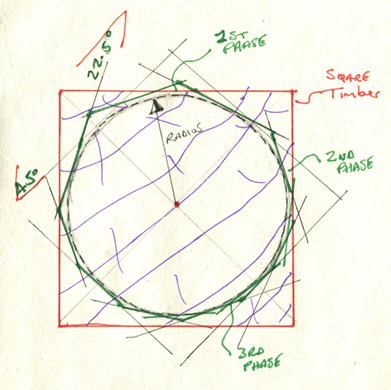
The second operation was to drill a hole down the centre of the stock timber with a 6mm drill bit. The wood was set square in a vice on a pillar drill and a hole bored down its core to accommodate the aluminium.
To be honest with you, most of the teachers and ESWs went their own way, freestyling, shaping the wooden parts, integrating underside curves with small finger-shaped hand grips. After the tight discipline of the metal techniques, finishing of the handles with spoke-shaves and rough-sharp rasps into vernacular crafted forms offered the makers a sort of soft therapeutic warm-down. The workshop took on a quieter woody – less hard metallic - aspect; a fresh atmospheric with the room infused by the aroma of the freshly worked old dead growing thing: the trees.
The organic-looking handles were finished with glass paper, students instructed in how to work from the roughing grades, 60 grit through to 100 grit, fining down to 240 flour paper. The job was finished by oiling the timber with Danish oil which brings out the light and shade and twisting lines of wood grain; sealing the material from moisture, and ultimate rotting. The final operation was to cement the riveted trowel section into the completed handle with a small dob of epoxy resin adhesive and stand back and admire; take in what had been achieved in a short after-school making session.
We stood around chatting. People said they’d loved making something. One said it had de-stressed him. Another couldn’t wait to take it home to show others. Some said nothing, but admired their handiwork. A few critiqued their own trowel, then complimented other’s workmanship. Phone cameras came into play. After we all packed away and tidied the workshop up ready for the next D&T school day – vacuum forming plastic bugs for students to stick googly eyes onto – everybody rushed out of the door to get home for tea. But one person hung back. She said to me ‘I’ve really enjoyed making this. Being in the workshop was just what I needed’. Good, I thought, and said ‘I’m glad’. She said ‘No more than that Steve…I needed this’. She paused. Looked a bit upset. She told me she’d had a horrible day. Awful and terrible because she was in personal conflict with a co-worker. The situation was unbearable. The emotional pain almost tortuous, nearly breaking her, she reckoned. So upset, she just wanted to go home; get out of the place. She’d forced herself to stay on. But holding up the trowel said ‘I’m so glad I stuck it out – I’m dead proud of making this’. She waved about the trowel as if digging the earth. It might only be a small thing, she admitted, but the trowel had proved something, her soul was restored, she had something to use and show for herself. The Trowel project will feature in Museum of Making workshop programming 2021
_____________________________________________
1 note
·
View note
Text
The Interlace Project - What is it and meet the volunteers
On the 15th of February this year I sat in on a workshop held at the Museum and Art Gallery as part of the Interlace Project. With the buzz of Pangolin Day happening in the World Collections gallery, I got to see a small group of museum volunteers getting to grips with the weaving work they were undertaking as part of the project, which will eventually form an art installation to go into the new Museum of Making. This was being led by artist Toni Buckby and museum volunteer Ruth Winterbottom. Scroll further down to find out more about the wonderful volunteers involved.
More recently I had the pleasure of talking again with Toni, and asked her some more in-depth questions about Interlace.
Please introduce yourself.
“My name is Toni Buckby and I'm an artist and PhD researcher based in Sheffield. My work spans the seemingly diverse but oddly related fields of textiles, electronics and computer art. I specialise in hand embroidery, with a particular focus on the 16th Century technique of blackwork, and the creation of experimental interactive electronics. I also spin, weave, draw, code, laser cut, 3D print... I spend most of my time attempting to get impractical ideas to function! I love to collaborate, so I often work with other artists on projects, as well as running public workshops and making a lot of my work available online for others to use. I see a parallel between the making of textiles and the making of digital work – both are logical processes of building complex structures through simple components. There is certainly a conceptual similarity, but I also create hybrid works, like embedding electronics into fabric or creating computer simulations based on textile techniques. I’m quite playful in my approach to my work – I take great delight in mashing (often disparate) materials and ideas together to see what happens - it’s why I like to collaborate so much. There's joy in the attempt to get something working (or not!).”

Image: Toni introducing museum volunteers to the bare cocoon bodies they will be weaving onto

Image: The wooden structures are modelled on silk moth cocoons, these being intrinsic to the silk weaving that took place at the Museum of Making site during the 18th Century. ©Toni Buckby
What is the Interlace Project?
“The Interlace Project began in 2017, when I was invited by Derby Museums to design and produce simple weaving looms that could be manufactured in the maker space at The Silk Mill. All the loom designs and instructions for how to use them were made available for free online (click here), and I've also run many public workshops in the basics of weaving using the looms. Inspired by the building's history as a silk spinning mill, I have now designed a large interactive textile sculpture, which is being made in collaboration with museum volunteers. The sculpture consists of nine woven silk moth cocoon shapes that have fibre optic light strands running through them; all being made by museum volunteer Ruth Winterbottom and her team of amazingly skilled volunteer weavers. The pattern of the lights will be programmed by visitors using punch cards (similar to the ones that were used to create weaving patterns on Jacquard looms in the 19th Century), and the colours will be controlled by touching small woven panels, a mixture of different fibres plus rows of conductive metal thread, that have been made by over 100 volunteers during several group workshops.”
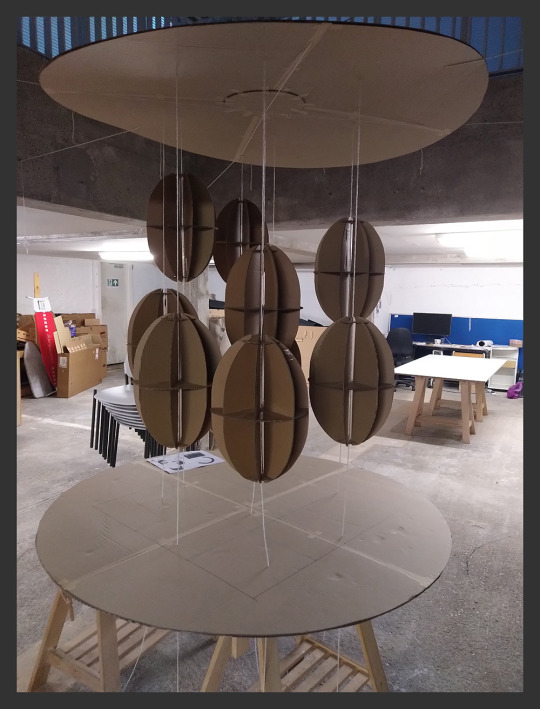
Image: An early cardboard mock-up gives an indication of what the installation will look like. ©Toni Buckby

Image: An example of the fabric and metal touch panels that will form the interactive controls for the installation. ©Toni Buckby
What drew you towards wanting to work with Derby Museums and the Museum of Making?
“Two of my key interests as an artist are showing and sharing the processes of making. I love the fact that Derby’s Museum of Making will celebrate manufacturing processes as well as getting people involved through its events, workshops, volunteer programme and maker space. I've met so many brilliant, enthusiastic people over the course of developing The Interlace Project and it's been a real pleasure working with an organisation that has such similar interests.”

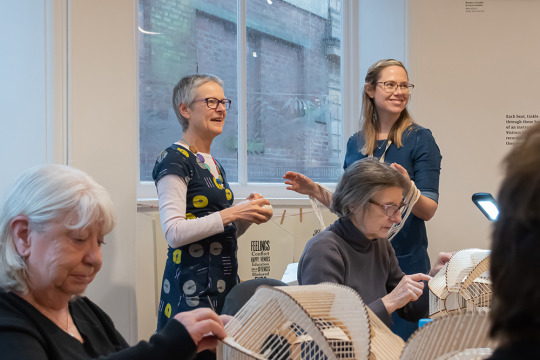
Are there any thoughts or feelings you would like Interlace to provoke?
“I think, firstly, I hope visitors to the museum will be delighted by the piece - it's very playful! Secondly, I hope that people will take the time to appreciate the effort and skill of the volunteers who have made the work. I've been genuinely blown away by the quality and creativity of all those who have contributed so far - both the experienced weavers and those who had never woven before getting involved in the project. Everyone should be immensely proud of their work!”

Image: One of the cocoons approaching completion, fibre-optic and organic threads interspersed

Image: An example cocoon with the fibres illuminated. ©Toni Buckby
How will people be able to get involved with the project?
“Visitors to the museum will be able to interact with the sculptural installation by programming the light patterns and colours. Additionally, the online resources (designs and instructions) are available on the projects Instructables site, if people would like to have a go at weaving themselves. Finally, as the interactive woven panels are going to need to be replaced every few months, we are also (hopefully) going to have more workshops in future where people can have a go at weaving their own panel, which will then become (temporally) part of the installation”.


It will be very exciting to see this artwork in action when it takes its place in the Museum of Making, and to see how it will very physically link the first use of Derby’s Silk Mill as a factory with it’s new iteration as the Museum of Making, showcasing our regions industrial heritage and innovative future.
Check back for more posts from Oliver!
Interlace Volunteer Responses
We asked some of our wonderful volunteers about their experience on the Interlace project and here’s what they had to say.
Ruth

We asked Ruth why she decided to start volunteering with Derby Museums:
‘I enjoy art, heritage and involvement with people and always relished my visits to the Museum. When we moved into an apartment next to the Silk Mill, it was a no-brainer!’
What about Ruth’s involvement on the Interlace project?:
‘I’ve been working with Toni Buckby to help realise, with a team of local skilled craftspeople, her vision for a textile installation in the new Museum of Making. Toni references the silk cocoon and weaving in her computer-controlled light display.’
Ruth shared what she has got from being involved in the Interlace project:
‘It has been a pleasure and rare privilege to be part of such a professional textile project! I’ve revisited old skills, learned new ones and interacted with lovely people, not least Toni herself. She is a wonderful artist and generous person. It’s humbling to be part of the start of a new Museum’s journey.’
Barbara

Barbara responded to a Derby Museums call out asking for volunteers for a weaving project; she said:
‘Weaving sounded right up my street! I love designing and making things particularly with textiles of all types.’
Just before the lockdown Barbara was able to take home a piece of the project to work on:
‘It took many hours of peaceful meditative activity which was marvellous occupation in the circumstances that was very good for me; also providing a topic of conversation with friends and family that was positive and different from the constant Covid coverage and shared anxious feelings of being separated from much loved and familiar people and activities’.
Hazel

Hazel met volunteer project coordinator Ruth at a Derbyshire Guild of Weavers, Spinners & Dyers meeting where Ruth presented Toni Buckby’s concept:
‘I jumped at the chance [to be involved] - what a great idea and to be part of the museum redevelopment.’
Hazel has been weaving one of the cocoons:
‘This was something new for me and a bit of a challenge, but after over 60 hours of weaving I’m really pleased with the results [and have got] a huge sense of satisfaction from the weaving process and immense pride in what I’ve achieved. I can’t wait to see it installed.’
Sandra

Sandra joined as a volunteer through the Derbyshire Guild of Weavers, Spinners and Dyers and has woven one of the cocoons:
‘As the silk mill was an important, past Derby industry I felt it was relevant, as a member of The Derbyshire Guild, to represent the group by using my weaving skills on a piece of the installation. It has been a great opportunity to work on a creative form using materials, especially the lighting, which I wouldn’t normally have used.’
Bibi

Bibi explains why she got involved with the project:
‘The idea of weaving a cocoon was irresistible to me. I am also excited about the development of the Museum of Making and what it is going to offer to the community.’
However it wasn’t without its challenges:
‘This cocoon was a challenge. The design is so good and the whole exercise was very rewarding in its outcome. I am delighted to be part of the project as a group effort. I am looking forward to seeing them all illuminated.’
Joan

Joan, as a weaver, was interested in helping with this project:
‘[I have] never undertaken a project of this sort before. I certainly found this an interesting challenge with the optical fibre being a difficult addition and always at the back of my mind the fact that my work was going to be on public display.’
Thank you to all of our volunteers who are helping to make the Museum of Making, we really wouldn’t be able to do it without you!
2 notes
·
View notes








